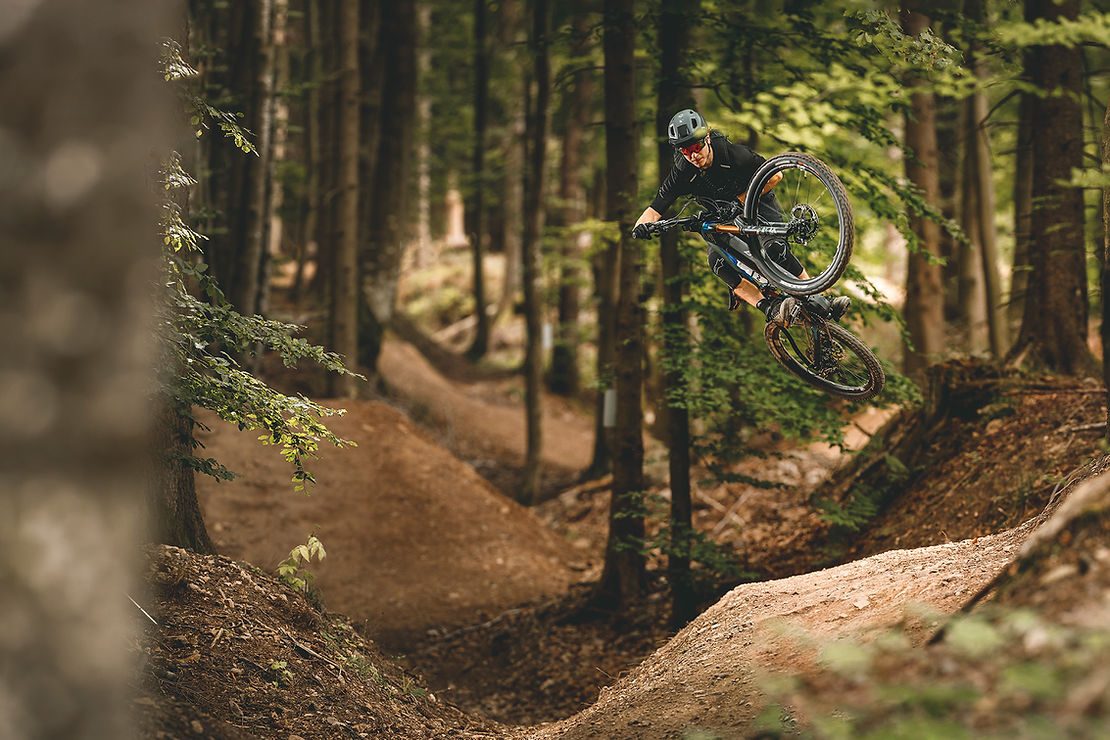Trail Builder: Power of One
What started as a one-woman initiative six years ago has gained a life of its own in the form of recent Trail Fund recipient, Raglan Mountain Biking Club – a 60-strong crew that’s since developed its own local network.
“I’m not saying it was easy,” says club treasurer Dirk De Ruysscher, who has been involved since the beginning. “It was definitely a long process, but we’ve gotten to the point where we have some local options and we plan to continue growing.”
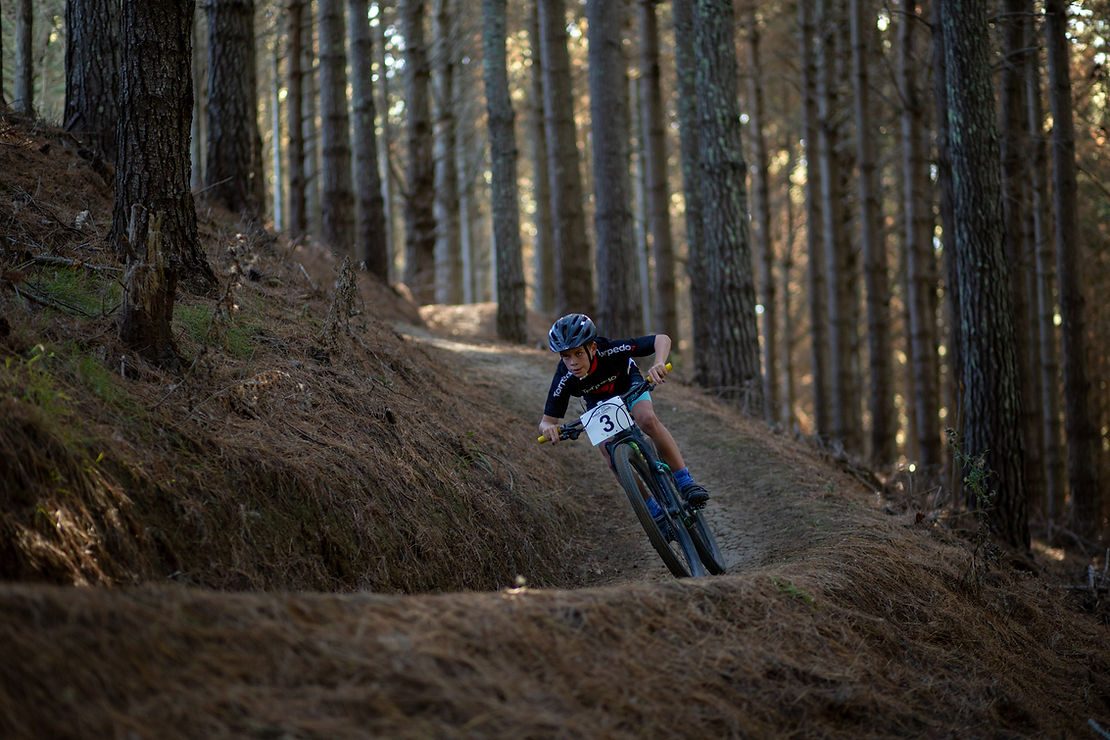
While the club was in discussions with Waikato District Council about acquiring some land to build on, the crew made up for the lack of local tracks with trips to Taupo, Rotorua and Te Miro, near Hamilton.
Dirk says it was a great way to start building a mountain bike community in Raglan, and to avoid losing momentum while the consent process was underway.
“After four years, we came to an agreement with the council for the club to lease a section of Wainui Reserve, a 140-hectare farm park giving access to Ngarunui Beach,” says Dirk. “As soon as the papers were signed, we were fundraising non-stop. Within a year, we’d commissioned Empire of Dirt to build a 6km loop network, spread over eight different trails.”
While 80% of the trails are Grade 3, there is one shorter and easier kids’ loop, as well a few grade 4, and a narrow but steep Grade 5 option.
Building Appetite
What might seem short and sweet to some is the perfect fuel for the mountain biking fire in Raglan, which faces the challenges of a fairly transient population and limited available terrain.
“Basically, what this small network has done is given us trails to call our own, and that in itself has helped pique interest in mountain biking and given people a solid reason to join the club – which supports our goal of building a larger trail network,” says Dirk.
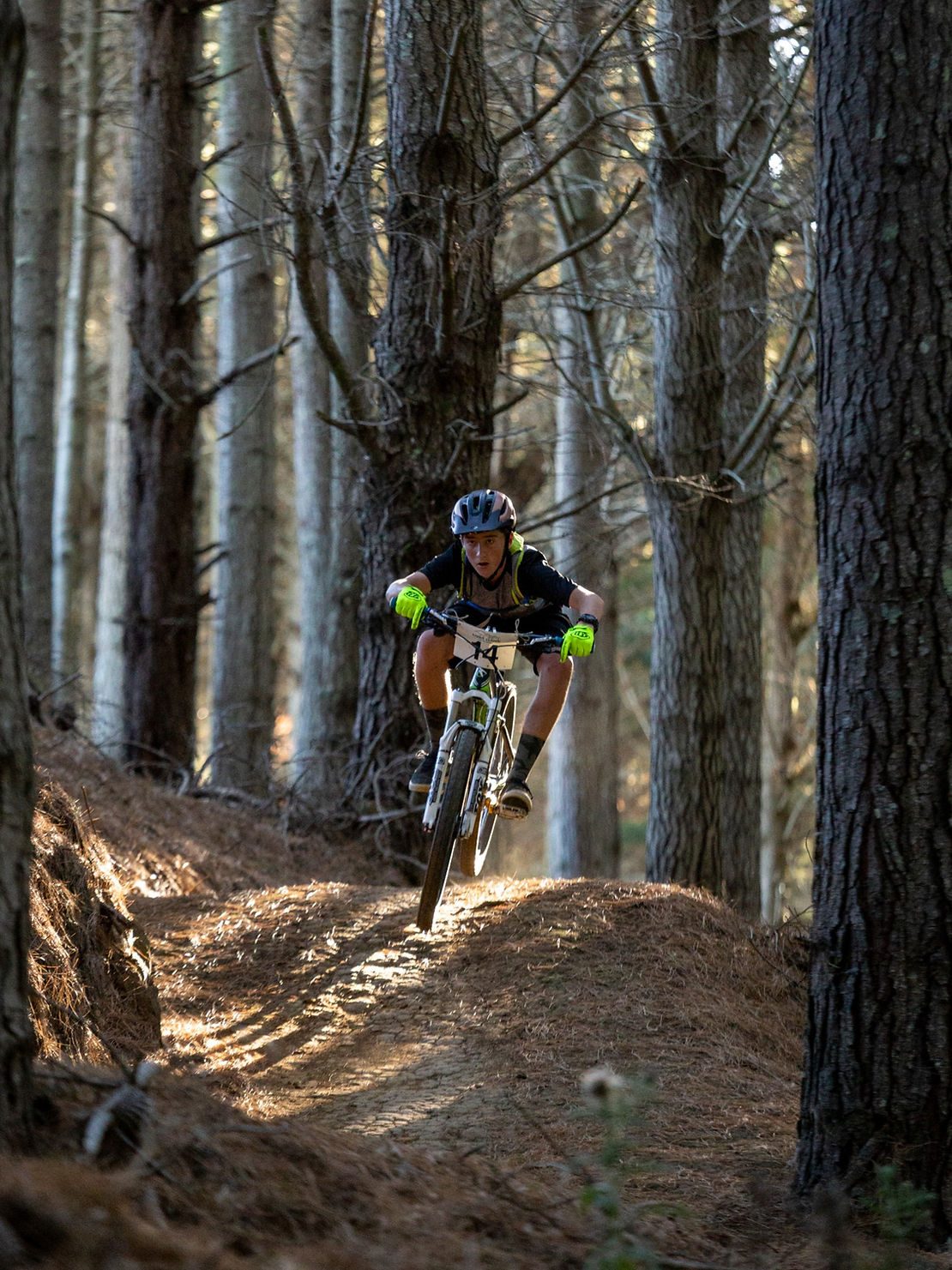
In exchange for the lease, the club is committed to maintaining the network. It hosts maintenance working bees a few times a year, and in between Dirk enjoys tidying up the trails.
“We have enough people to volunteer, but we didn’t have the right tools, so we applied to Trail Fund for funding to purchase two wheelbarrows and a weedeater to help with maintenance. It’s the first time we’ve applied to Trail Fund and we were thrilled to be successful in our application.”
With the new equipment, Dirk and a crew of volunteers were able to extend Grade 4 trail Tin Man Goes Down, and undertake maintenance on the entrance trail, which requires a lot of maintenance as it leads to a number of trails and is co-shared by horse riders.
To help drive more interest in the park, and generate more membership revenue for tools going forward, the club held an inaugural mountain bike race – The Twilight Challenge – in the park, earlier this year.
“We had a great turnout and everyone really enjoyed the trails, so we’re planning to make it an annual event,” says Dirk.
Nothing Happens Overnight
For others who feel stuck in a consenting process with their local government bodies, Dirk recommends persistence and patience.
“There were times when it felt like we were getting nowhere, which can be very frustrating, especially as a volunteer, but it was worth it in the end,” says Dirk. “It also helps to have a cycling-minded council person on your side, so make sure your members realise the influence local elections can have.”
Words: Meagan Robertson
Images: Ken Hansen
News: The all-new Stumpjumper
Short-travel trail bikes have long cornered the market on lightweight and snappy climbing, but also often fall short when it comes to suspension performance and big terrain capability. The new Stumpjumper tears up that old script — we’ve never made an all-round trail bike this light, efficient, AND capable. The new Stumpy brings a telepathic, magic carpet quality to your ride. It’s planted and weightless at the same time. Stable, yet nimble.
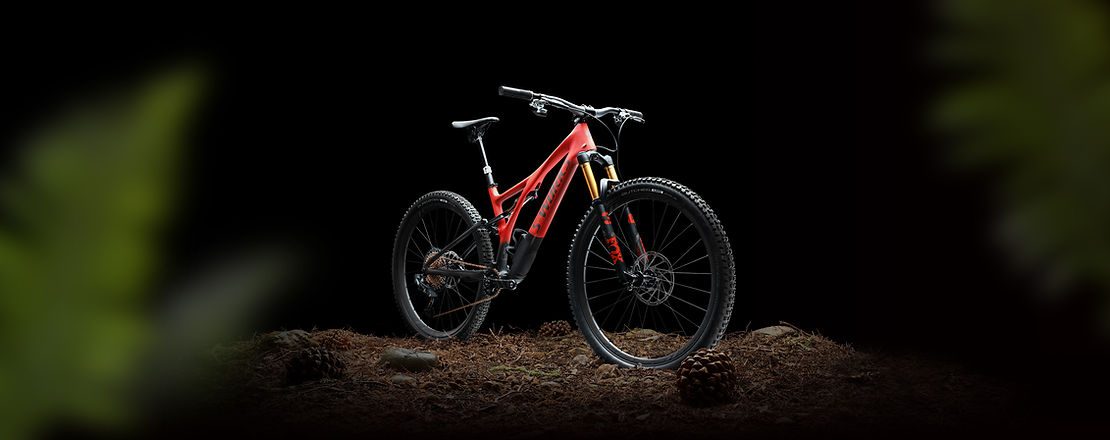
To make the Stumpy the ultimate singletrack flow finder, we combined the lightweight, efficient DNA from our Epic EVO with the benchmark handling and capability of the Stumpjumper EVO. The result is a well-balanced performer that climbs and accelerates like it has a motor, descends with conviction, and flat out tears through every conceivable trail condition.
Enjoy.
THE BACKBONE OF THE RIDE
The frame is the backbone of the bike. It’s the origin of control and efficiency and is the centerpiece of any serious weight saving effort. Ready to build with all the fixin’s*, an S-4 Stumpjumper chassis is 2,240 grams; that’s damn light! Over 100 grams lighter than the previous Stumpjumper chassis.
To get to this weight — while improving handling characteristics, pedalling efficiency, and toughness — required the development team to pull out all the stops. The process started with frame shape, proceeded to composite selection, and finished with hundreds of iterations to optimize the layup.
*Including paint, shock, all assembly hardware, link, carbon extension, molded downtube and chainstay protectors, axle, and seat clamp.
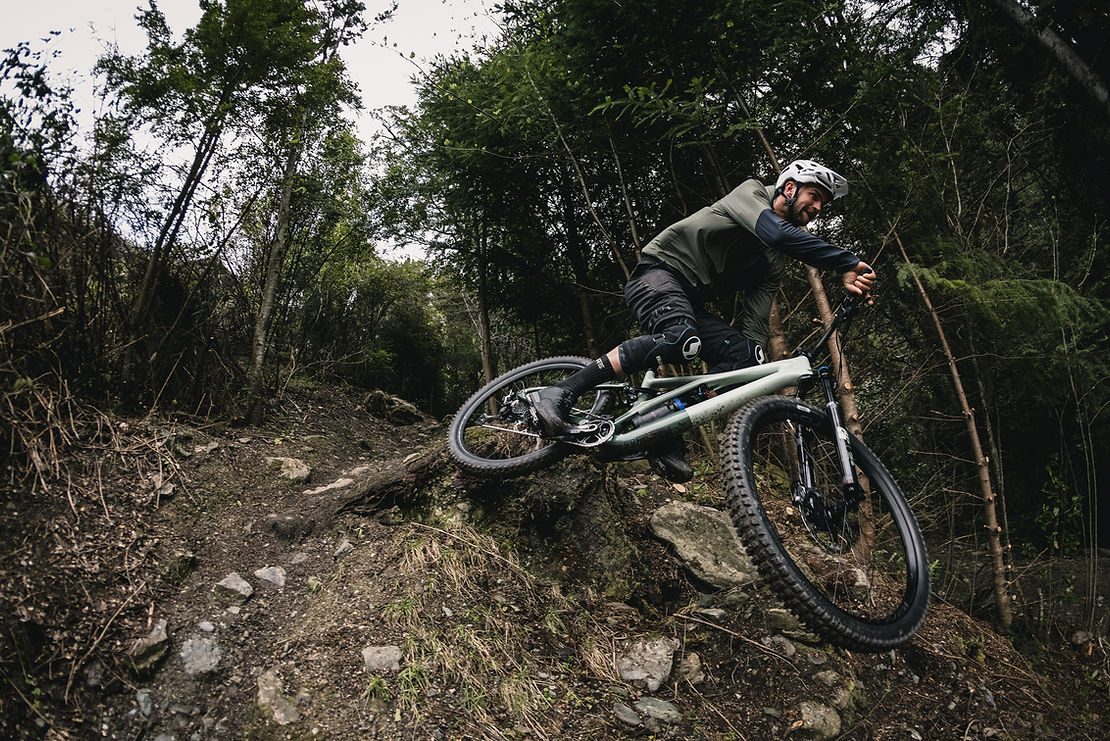
HEY LAZY CARBON, BEAT IT!
The shape of a composite frame determines the vast majority of that frame’s weight, stiffness, and durability. After crunching countless Finite Element Analysis calculations, our engineers optimized the dimensions and radii of the Stumpy’s frame tubes and their intersections, eliminating “lazy” material that would otherwise hide in unoptimized corners. This ensures that every fibre is delivering the most strength and stiffness it can.
Small adjustments in shape make big differences in how the material performs. A great example of this is the shock mount at the top tube. By keeping the top tube “intact” (rather than piercing and bending it to shroud the shock, like the previous Stumpjumper), it’s more structurally sound and therefore more effective at bearing a load. The flat sections of the shock mount likewise carries those loads more effectively than the curved shock mounts of the previous Stumpy. Together, this top tube/shock mount section is lighter AND stiffer than its predecessor, without sacrificing durability.
Another example of how shape optimizes material use is the Sidearm design. The asymmetric Sidearm strut supports the shock link pivot, boosting stiffness by connecting rear end with front for a direct and integrated feel. The Sidearm also prevents torsional loads from entering the top tube, which helps the bike track and handle with precision.
SWAT
Shit happens out on the trail. Flats, unplanned dismounts, rainstorms. Just ask Murphy, he wrote the law. Luckily the Stumpjumper’s SWAT compartment will faithfully carry all the stuff you need to get out of most trailside tight spots. And even with that high volume cavity in the downtube, our engineers figured out how to distribute all the loads around the opening. The Stumpy still delivers the stiffness required for telepathic handling on the trail, while also providing heavy-duty strength at an unprecedented light weight.
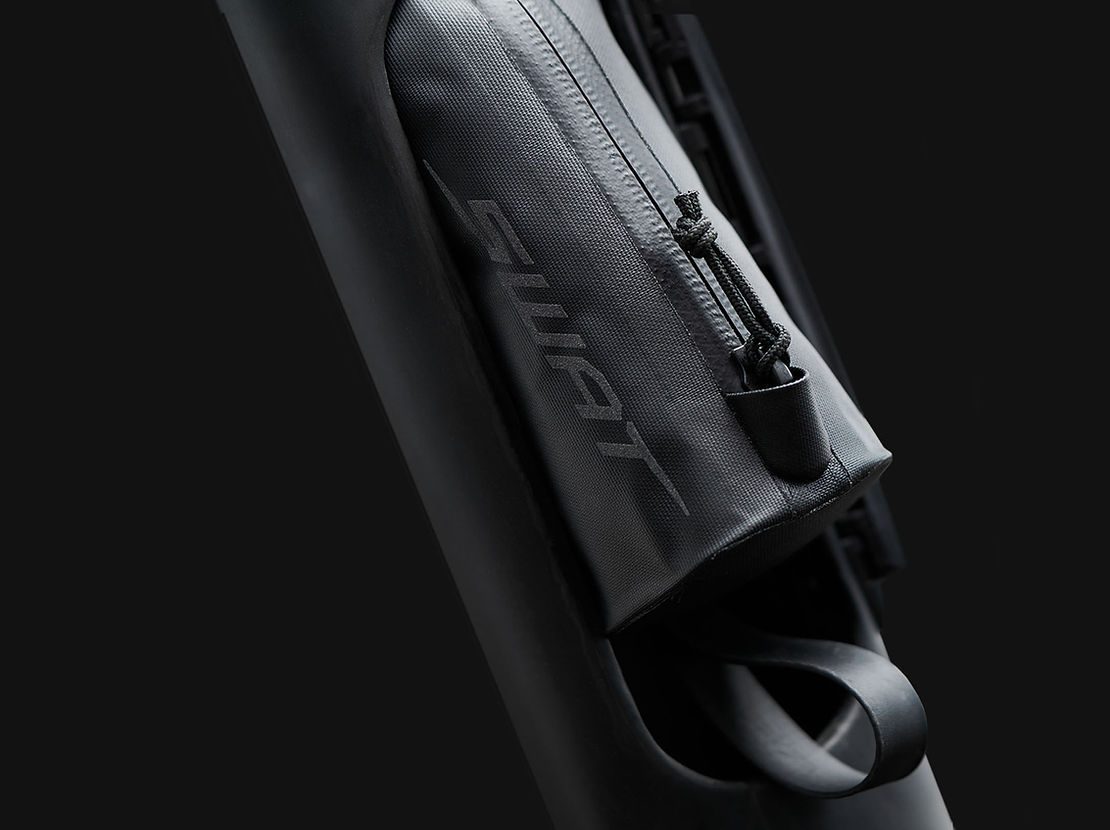
THE MISSING LINK
The pivotless seatstay/chainstay of the Stumpjumper leverages everything we’ve learned about building lightweight, full suspension trail bikes (something we’ve been doing since ‘93). A closer look at the rear dropout area revealed that there was no mechanical pivot. By applying our expertise in composites, we were able to ditch 55-grams of hardware, enhance lateral chassis stiffness, reduce maintenance, and precisely match suspension kinematics and chassis stiffness. In short, it’s the lightest, most efficient, control enhancing suspension solution for a mid-travel trail bike we’ve ever made. The elegance of this solution is fully realized and appreciated on the trail.
FLEXSTAY
Through precise shaping of the seatstays and chainstays, along with utilization of appropriate composites, we created a flex zone along the seatstay, above the brake mount, that serves up 130mm of travel without any rear end pivot hardware or redundant material required for bonding pivot parts in the carbon.
GOODBYE PIVOT, HELLO EFFICIENCY
The one-piece design improves torsional and lateral stiffness, which in turn enhances responsiveness and pedalling efficiency. These lateral and torsional stiffness gains are achieved by eliminating the flex intrinsic in mechanical pivots.
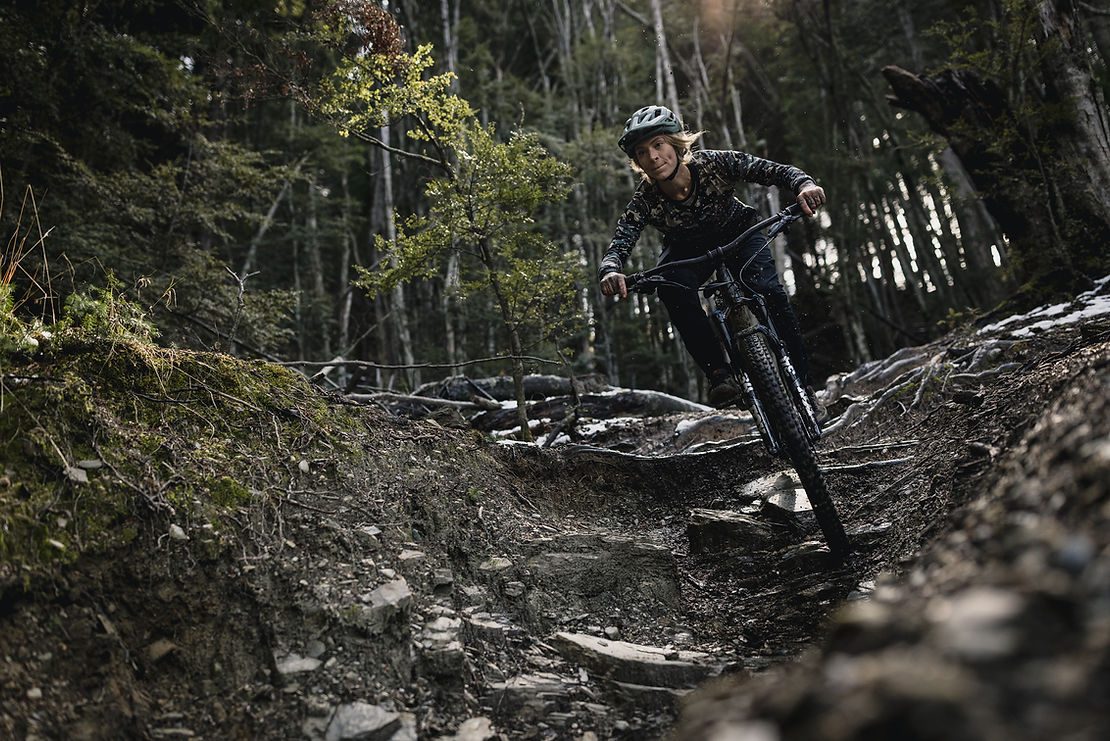
SUSPENSION
RxTUNE
Our trail obsessed team of engineers stay awake at night thinking of how to make suspension work better. For the Stumpjumper, they tailored every aspect that contributes to final suspension characteristics — kinematics, leverage curves, damping, and spring rates — to work together in harmony to deliver a highly controlled, responsive, and precise ride that handles bump forces like a bike with far more travel.
LEVERAGE RATE
The Stumpjumper has a very progressive leverage rate with a steep slope. This helps achieve a lively, snappy ride with generous utilization of travel and a good platform to pedal against through the mid-stroke, as well as great bottoming resistance at the end of the stroke. These are exactly the characteristics you want for a mid-travel trail bike designed to see full-size trail duty.
The combination of the progressive leverage ratio and mildly progressive spring rate results in precisely the ride we dreamed of for our mid-travel trail ripper. What you feel on the trail is a lively, snappy ride for the first two-thirds of travel, then — thanks to the increasing spring rate — excellent bump force management and resistance to bottoming in big events.
To ensure sufficient rebound with fast, deep hits, the progressive rebound damping catches big impacts. But, because rebound damping is lighter through the mid-stroke, it comes back quick so it’s ready to handle the next impact.
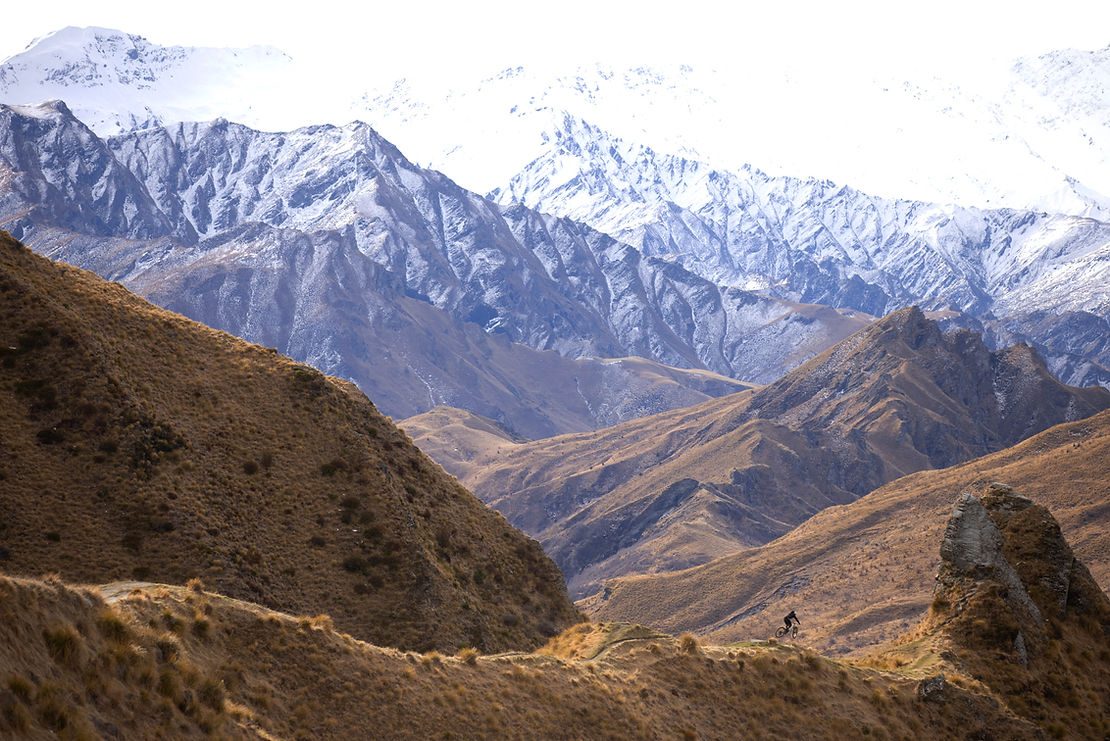
CAPABILITY AND STABILITY
The new Stumpjumper geometry contributes to a level of control and efficiency never before found from a mid-travel trail bike. How? The generous cockpit gives you the room you need — centering you on the bike and improving traction and corner control. The low bottom bracket, slack headtube angle and reduced fork offset keep things stable in the rough. A steep seat tube optimizes power output and puts your weight over the front while climbing. And short chainstays keep things flickable and nimble.
POWER TO THE PEOPLE
Creating the ultimate trail bike out of costly materials and utilizing processes typically reserved for space exploration was pretty hard. Bringing that unprecedented performance to as many riders as possible was even tougher. But we did exactly that with our new alloy Stumpjumpers, delivering the same great geo, Rx-Tuned suspension, ride quality, and S-sizing as their carbon siblings, but at much more attainable price points.
News: The all-new Stumpjumper Evo
We’re lucky to be riding during the Golden Age of mountain biking. We have access to more trails than ever, built with more diversity than ever, riders are progressing and nailing what was previously impossible, and now the new Stumpjumper EVO is evolved to meet the demands of modern riders. Delivering unprecedented control, capability and adjustability, along with unexpected climbability, it tames any terrain from chundery jank to progressive high speed flow and modern big hits. It’s your seat in the eye of the hurricane. And that’s good, ‘cause when shit starts flying on the trail, you’ll be zen in the middle of the mayhem.
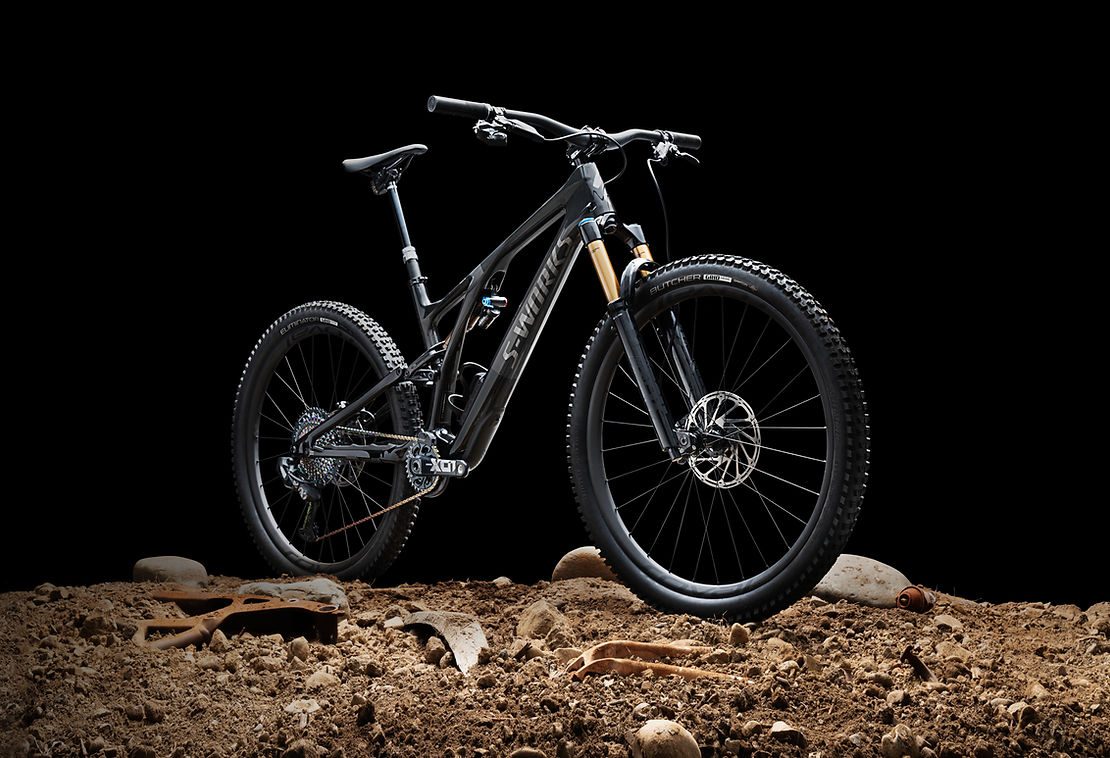
Available in six style-specific sizes, the Stumpjumper EVO sets the benchmark for progressive trail geometry, delivering DH capability never before found from a 150mm bike alongside lively climbing manners. How? The generous cockpit gives you the room you need; centering you on the bike, optimizing traction and corner control. The low bottom bracket, slack headtube angle and reduced fork offset keep things stable in the rough, while giving you the freedom to destroy the turns, float through them, or nail the inside lines. A steeper seat tube optimizes power output and puts your weight over the front while climbing. And short chainstays keep things flickable and nimble.
Mullets are a thing these days. Not the hairstyle, though. Those are best still treated with wary respect and plenty of distance. No. We are talking about a 27.5” rear wheel and a 29” front. The big hoop up front provides traction and stability everywhere, while opting to run a smaller rear wheel can liven up responsiveness and also give more physical riders a skosh more room to get rad without hooking their shorts on the rear wheel. We utilize a different, aftermarket shock link to achieve Mulletdom with the EVO, in order to retain the handling, geometry and suspension characteristics that enable the rest of the package to shred so assertively.
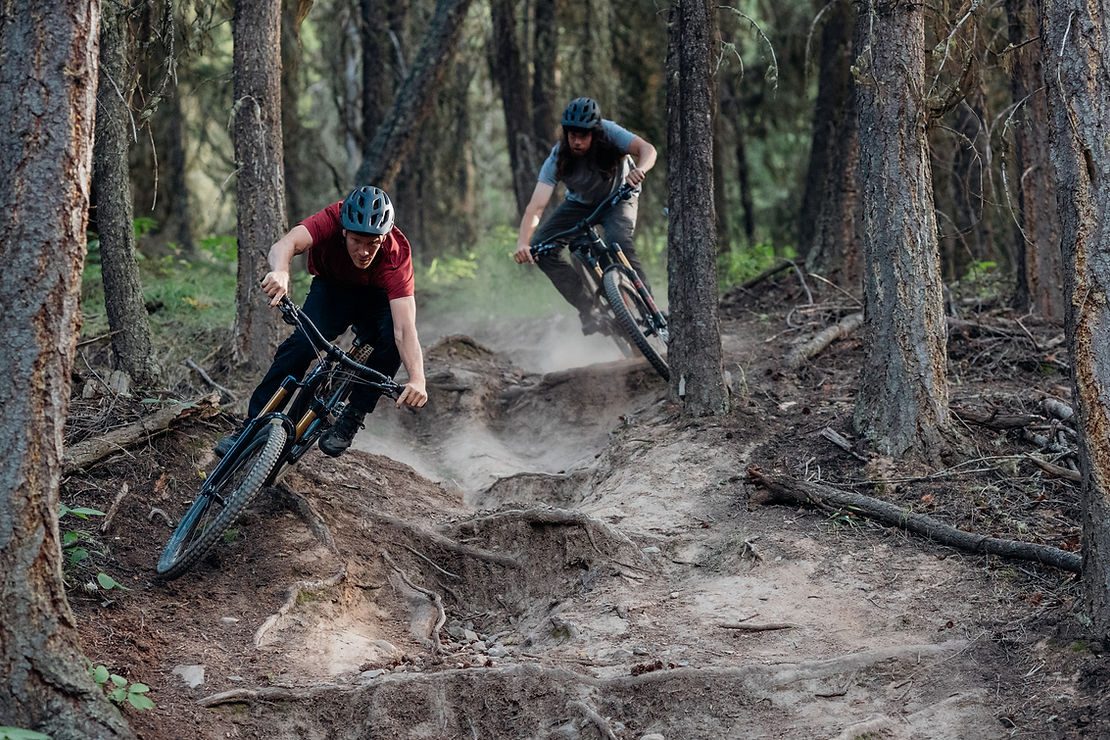
The EVO’s 160mm front travel and 150mm rear feels bottomless on big drops, supple on small bumps, devours square-edged hits, yet still pedals responsively and climbs like a lightweight. The key ingredient here is Rx Tune – your prescription for fast. Riders all, our team of engineers and technicians toiled to develop every aspect of the EVO’s suspension into an optimally performing singularity. Chassis design, telemetry, wheel rates, spring curves, custom shimstacks, oil viscosity; front and rear suspension obsessed over, prototyped and tuned to deliver optimized and balanced performance, allowing the bike to disappear beneath you, leaving you confidently in control.
The SWAT door on the Stumpjumper EVO is a masterpiece of carbon fiber construction and spatial optimization. A simple pull and twist of the water bottle cage opens into a cavernous downtube storage compartment. There’s 15% more room than before; enough room to store 22oz of life giving water in an included, specifically designed bladder. Or some tubes and a rain jacket. Or folded up slices of pizza. Or multiple bananas (careful with that last one). Because we can tailor the layup of our carbon fiber, putting material where it is needed most, we can also design in this easy access storage compartment with zero compromise of the chassis strength or stiffness.
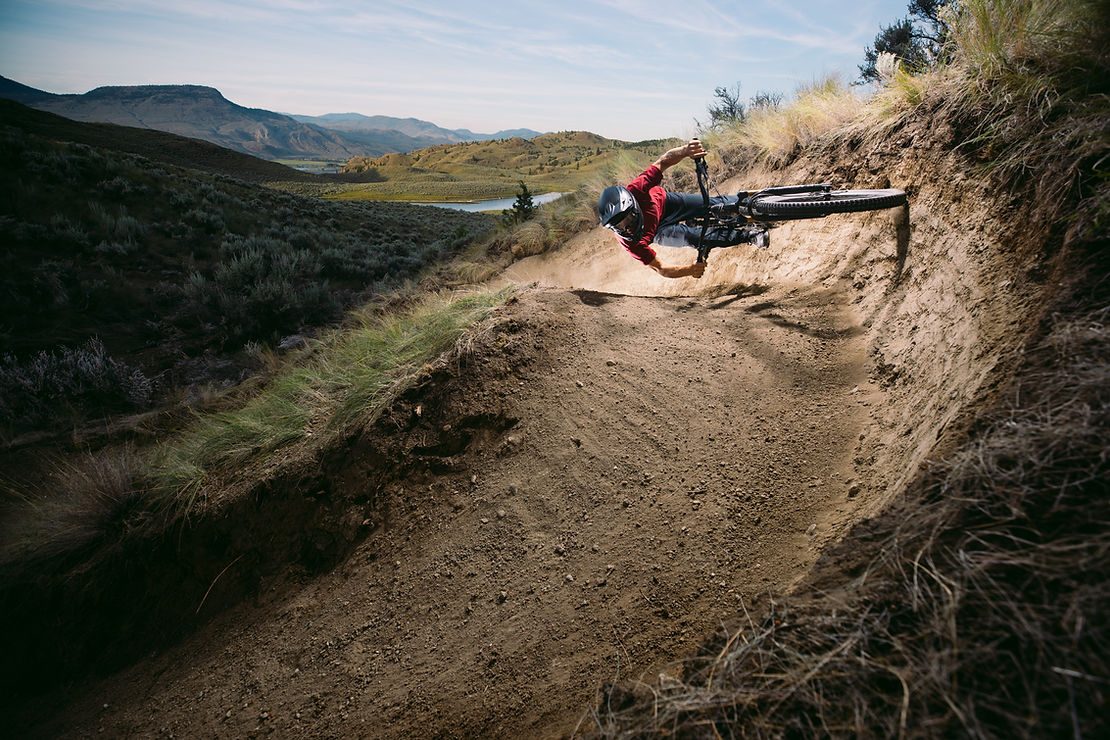
There’s a generous amount of anti-squat early in the EVO’s travel. When it comes to climbing responsiveness and pedalling snap, anti-squat is your friend. It helps you put the power to the ground without unwanted pedal-induced bob, and it transforms wattage into forward and upward momentum. As the suspension moves through its travel, the anti-squat characteristics drop below zero, and the suspension focuses on sucking up everything from chunder to dead sailoring blind hucks-to-flat.
Story: Setting up a Workshop That Works for you
While it’s not every mountain biker’s favourite pastime, doing some at-home bike maintenance is part and parcel with the sport itself for a number of you. However, not having the right set up can really compromise the enjoyment you get from working on your bike, so this month we’ve put together a few tips on setting up a home workshop. On their own, these tips might not seem that important, but combined they can make a big difference.
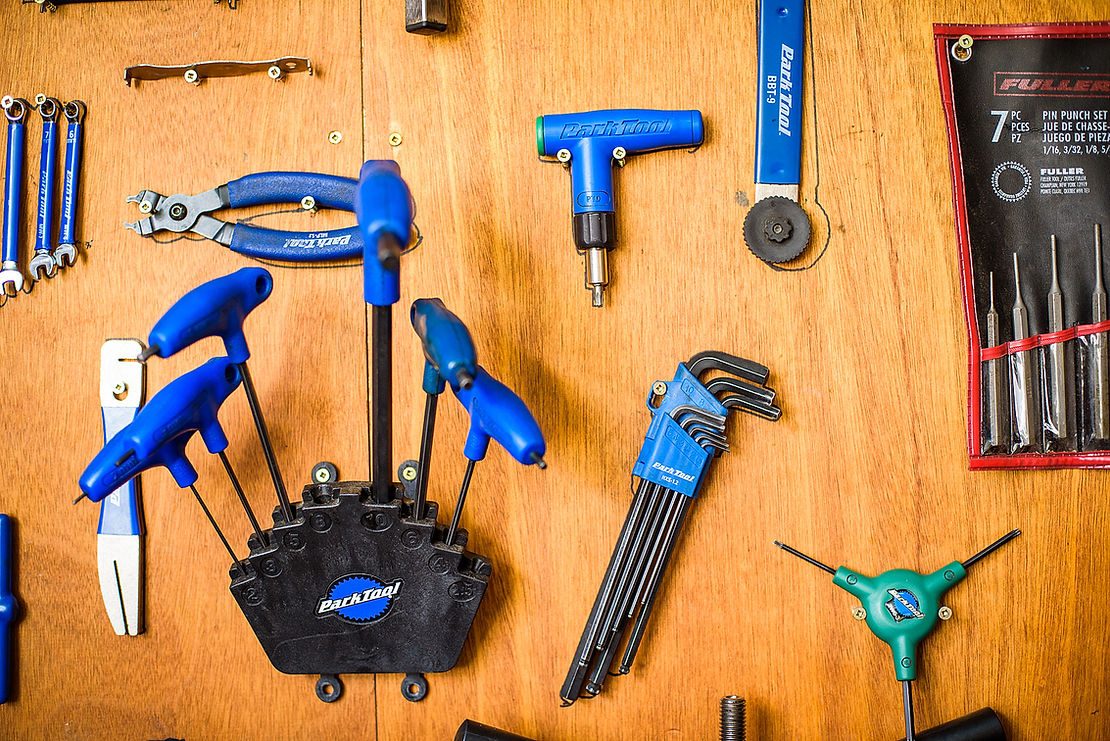
Step 1 – Identifying Your Space
Ideally your workshop would be located in a garage or shed, but not everyone has that luxury. If an indoor space is your only option, look for a tiled one if possible, as it’s hard to avoid getting anything on the floor. Ideally, the space should be big enough to be able to turn your bike around, so at least 2m x 2m.
Lighting is key to good workmanship and preserving your eyes. Natural light from a nearby window is optimal; however, it’s best to avoid direct sunlight if possible, or to be able to close the blinds when necessary.
If natural lighting isn’t possible, or when you’re working at night, you want to use fluorescent tubes or coil fluorescent energy lightbulbs. Try to avoid using sharp light because it casts heaps of shadows. Or, barring that, hang a good work/inspection light from the roof, as you want to be able to keep your hands free.
Ventilation is also important as a lot of the best cleaning products – even the ethical ones – are often quite smelly. Even if it doesn’t bother you, remember to consider others in your household – muddy mountain bikers often already have a bad rep in their households and there’s no need to encourage the perception!
You’ll need somewhere to store hazardous substances (such as kerosene/diesel for cleaning a chain). Most people use a container that they need to dump out. One concept that works well is to use an old freestanding laundry tub that can be used to clean parts in, with a catch bucket collecting the waste to be disposed of appropriately.
The bike also needs to have some mechanism to hold it upright. Using a bike stand is optimal if you decide to invest. If not, you need to find a way to hang your bike. One option is to strap your unused bike rack to the wall. See more details in set up section.
Step 2 – Stocking your Workshop
Once you’ve selected your spot, you need to start equipping the area with a number of essential tools and items. Here is a list of what we consider essential:
- A good stash of rags – old cotton or flannel clothes are best as they’re not linty anymore.
- Bike stand or bike holding mechanism. If you don’t have a bike stand, it helps if you have a wall that you can mount stuff against.
Essential Tools:
● Good floor/ track pump.
● Small torch to be used as an inspection light.
● Tyre levers.
● Multi tool with all the hex and torx keys your bike needs, plus chain breaker and screwdrivers. (most decent bike specific multi tools will have all these things)
● Bike-specific cable cutting pliers.
● Side cutting and long nose pliers.
● Cassette lock-ring tool.
● Chain whip.
● Mechanic’s pick (a sharpened spoke will work)
● Soft-faced hammer or mallet.
● Phillips and flat screwdrivers.
● Shock pump.
● Utility Knife.
● Spoke nipple wrenches.
● Bike hanging jig: Chains from ceiling/ towbar bike rack mounted to the wall.... there are many make do options.
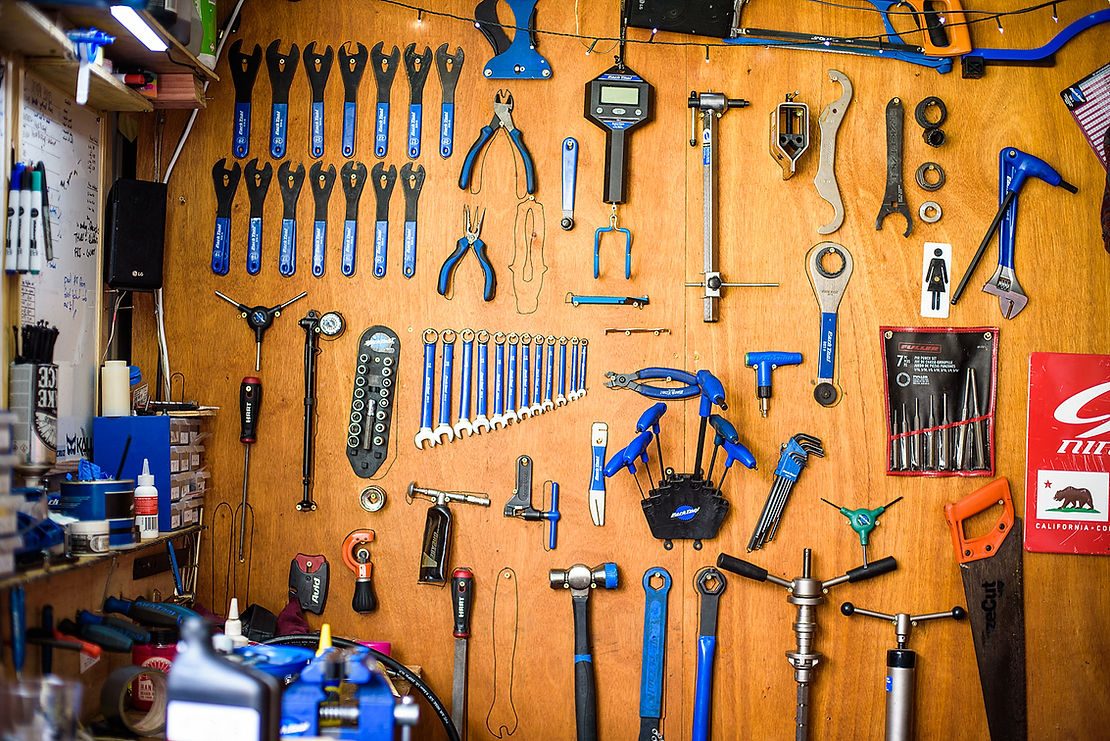
Great to have if you want to get really well setup:
● Good quality foldaway bike work stand.
● Solid work bench with engineer’s vice mounted to it.
● Air compressor.
● Good fluorescent tube lighting over work area.
● Chain joining link pliers.
Useful products and supplies:
● Zip ties.
● Electrical tape.
● General purpose bicycle grease.
● Wet and dry chain lubes.
● Spare chain joining links.
● Silicone spray.
● Residue-free brake cleaner spray.
● Water-soluble degreaser.
● Blue Loctite thread locker.
● Carbon grease if you have carbon bike parts.
● Workshop apron.
● Nitrile work gloves.
● Bucket and selection of bike specific cleaning brushes.
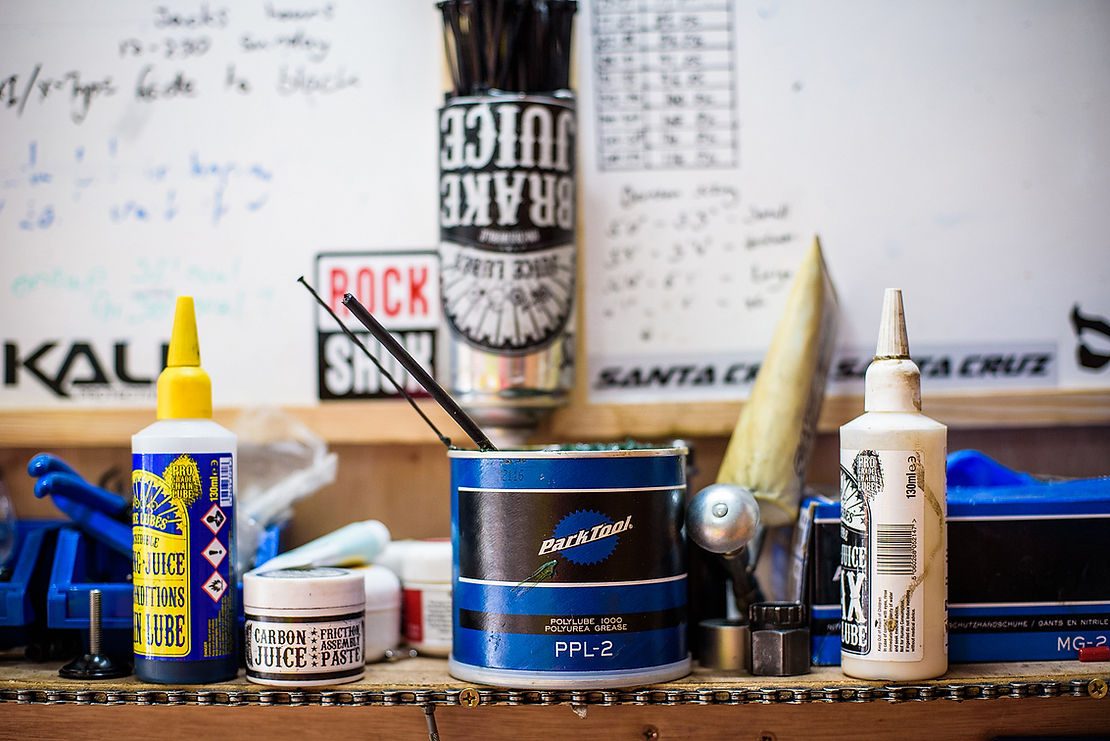
Step 3 – Setting it up
It’s worth stressing the importance of having your bike at work height, ideally somewhere steady that doesn’t swing. This can usually be achieved by using a work stand, which is a luxury, or a wall mounted bracket.
To enjoy the optimal bike set up, all your essential pieces of equipment should be within easy reach and have their own place. You should also have a piece of scrap carpet under the bike and where you’re standing – it’s less slippery and absorbs extra mess.
The most frequently used stuff should be in the easiest to reach positions, so you’ll need some sort of work bench top close to the bike to put things on while working. Use old cabinets if possible to keep stuff put away and use as a bench – an old kitchen cabinet with a bench top is optimal for this.
Words: James Duncan
Images: Digby Shaw
Story: Release the Hounds
With hands shielding the sun from our eyes, we scan the brown, barren emptiness of Hakatere Conservation Park. Several mountain ranges encircle us like we're in the centre of a gigantic crater. A light breeze carries the sound of barking, but the undulating landscape hides the culprit from view.
“Does he usually come back?” Adam asks, between sips from his water bottle.
"Usually," I sigh. We've not even left the car yet, and I've already managed to lose him. I clamber onto the roof and shout his name. In the distance, I can see a black blur chase several birds that soar high above. “Don’t worry, I can see him.”
Adam squints as if he's on safari trying to spot a wild animal across the savanna-like wilderness. “Is he coming back?”
My arms fall to my side. “…doesn’t look like it.”
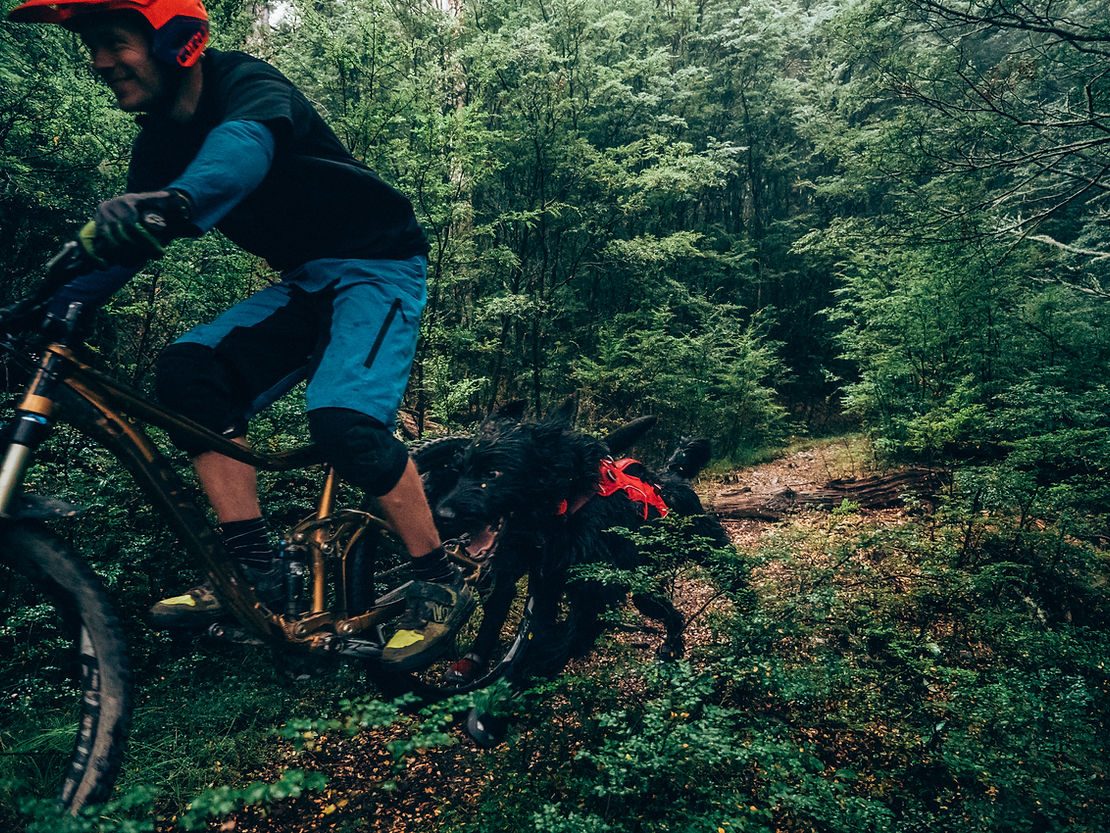
Up until three years ago, I’d never owned or spent much time around dogs. I didn't grow up with one in the family and was generally indifferent to the four-legged, tail wagging species. So when my partner suggested we get a puppy, I was finally swayed by the possibility of having a trail dog. I’d seen plenty of riders out on the tracks with well-mannered, obedient canines at their side, and it seemed an ideal way to combine the chore of dog walking with the joy of mountain biking. Training can’t be that difficult? Sit, stay, sick balls – easy. As I watched my not-so-faithful companion disappear over the Hakatere horizon, it appeared there was still a bit of work to do.
A Bikers Best Friend?
On paper, a trail dog should be your favourite riding partner. They won't cancel when it looks like rain; they'll never struggle through a hangover during a weekend jaunt, and their infectious energy can power you up the worst of climbs. However, something I had failed to consider when observing other trail dogs out on the local tracks was that I was witnessing the finished product. It can take months – even years – of training to get a canine to a point where they are trustworthy and capable enough to be taken out for a few laps.
Before we’d even got our dog Oshy near a bike, we had noticed a few of his quirky traits. Some of which lent themselves to the possibility of trail dog material, others… not so much. His breed is a cross between Border Collie and Huntaway. Which I appreciate doesn’t mean a great deal to non-dog people. Put simply, both varieties are energetic and bred to herd livestock, with Collies being the brains, i.e. able to follow commands, and Huntaways being the muscle, i.e. barks a lot.
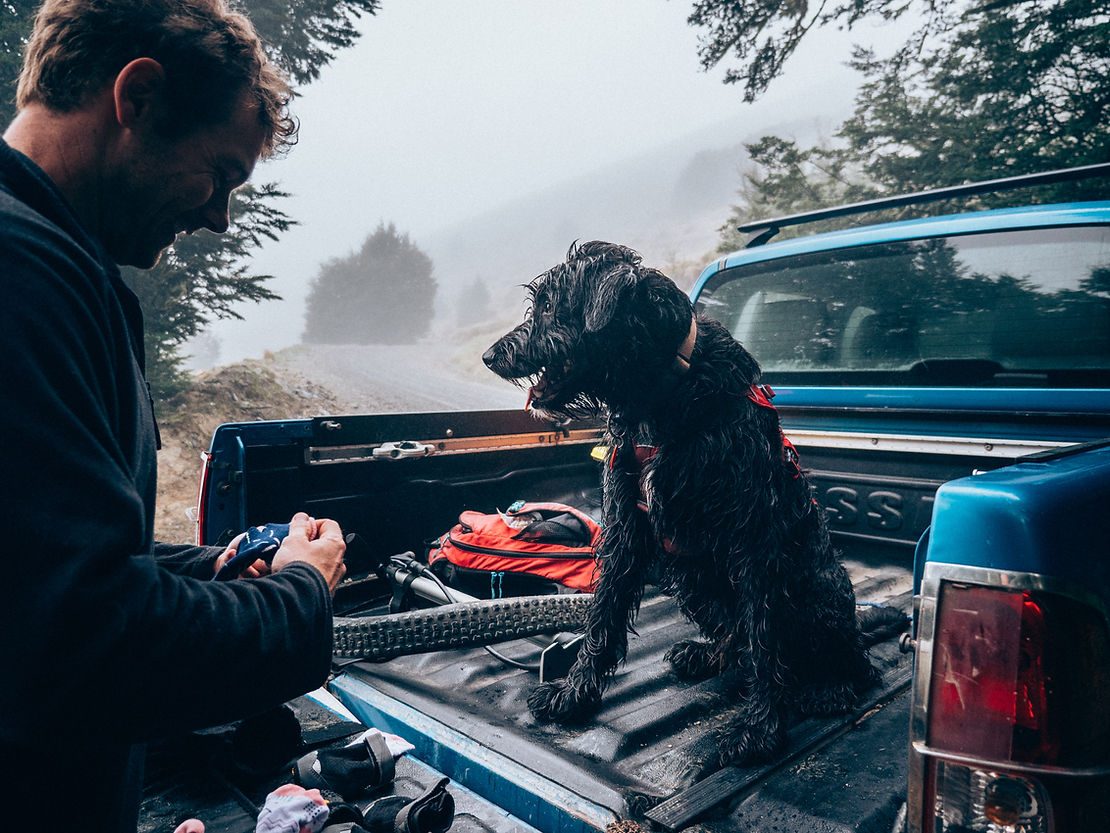
Understanding the breed and body type of your potential trail dog is important as it can dictate how they will cope when joining you for a ride.
“Generally speaking, larger dogs with long legs and long snouts are ideal,” explains Lisa Sturm, a trainer at Sit Happens, Dog Training Christchurch. “But that doesn’t include Greyhounds, as although they may appear light and quick on their paws, they have been bred for short, high-intensity exercise.”
Before we had consulted with Lisa, we’d helplessly watched Oshy chase seagulls for over an hour at the beach, so we knew his stamina was up to it. She recommended working on his control around chasing things first, before taking him out with the bike. Once that was sorted, Lisa suggested starting small and somewhere quiet for the inaugural ride, which is how we came to be in Hakatere Conservation Park.
Take One
Hakatere lies within the depths of Canterbury, and although not famous for mountain biking, it is remote. I’d plotted a course to the tantalisingly named Mystery Lake. The route followed an uneventful 4WD track in and returned via a surprisingly fun section of the famed Te Araroa walking trail.
Before we released the hound, we laid a short trail of dog biscuits for him to seek out and enjoy, helping to focus him before the ride. We made the mistake of leaving him to it while we sorted the bikes out, and once the biscuits were done, he unfortunately moved his attention back to the birds again.
Eventually we regrouped and set off, and it was only a matter of time before another mistake became evident. What I hadn’t fully taken into consideration was the distance. It was upwards of 30 kilometres, and we were out for far longer than planned. Before we'd even made it back to the car, Oshy was starting to stiffen up. He spent the following few days on his bed, staring at me with accusatory eyes.
Once the guilt had subsided, I began pouring over Topo-maps and DOC information, searching for suitable places for a second attempt. Then the obvious occurred to me - Craigieburn. Those that have ridden there will be familiar with the selection of soft, loamy trails and spectacular views it offers. With it being relatively quiet and full of shorter 10 km loops, it was an ideal location.
I was also keen to try some new commands we’d been working on, such as ‘Behind,’ ‘Wait,’ and ‘Let’s Go.' I'd practised them while riding around the front garden, tossing out treats like confetti at a wedding when Oshy got it right.
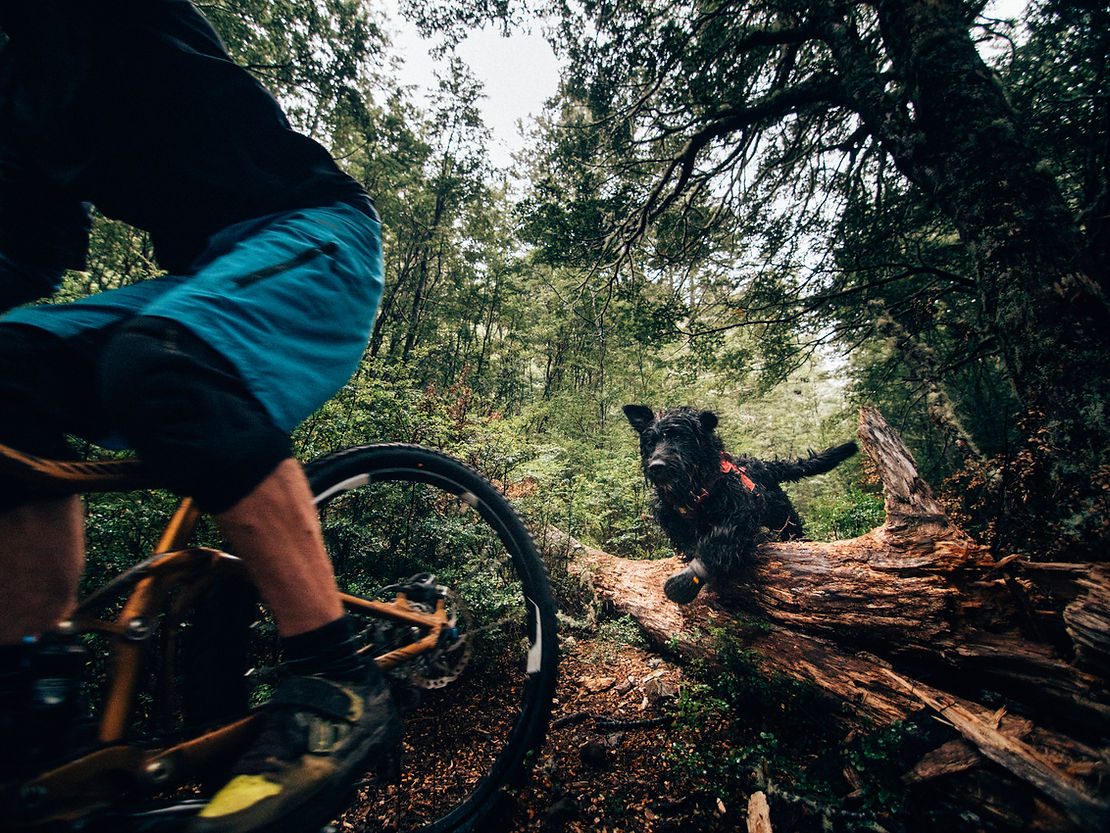
Take Two
On a crisp, bluebird day we slogged our way up the meandering Craigieburn access road to the base of the ski field. Sat at the start of a trail called The Edge, we both took a moment to enjoy the fresh alpine air and scenic views, before embarking – excuse the pun – on the track. This time the distance was right, and the commands worked suspiciously well, with Oshy waiting for the order to start, and staying behind the bike when instructed.
The Craigieburn trails are mostly through native forest, which provides welcoming shade, and we stopped at the many streams that trickle down the mountainsides so Oshy could keep hydrated. An important aspect to be aware of as you're freewheeling down your favourite trail is that dogs can't cruise, and can, therefore, be susceptible to over-heating.
Unfortunately, what I hadn’t taken into consideration was the trail surface. It's called The Edge for a good reason - sections of it traverse over steep scree slopes. As well as being a bit sketchy in places, it didn’t do any favours for Oshy’s paws while he dashed over the jagged shingle. During the drive home I heard a constant licking noise, and on closer inspection, it appeared that he had torn his pad. Another wave of guilt washed over me. There was only one thing for it; it was time to go shopping.
Retail Therapy
“First and foremost, I’d recommended a set of booties,” Rocky suggested, holding up a pair of adorable dog shoes. Oshy and I were in FurtherFaster, an outdoor store in Christchurch, which has a whole section dedicated to arming your canine for adventure. There are collapsible water bowls, dog-specific first aid kits and all-weather dog coats.
As we measured up Oshy for some new boots, Rocky told me about Badger, their three-year-old Labradoodle. The large, shaggy dog bears an uncanny resemblance to Oshy, except instead of barking there is a continuous desire to chase toys.
“These days he’s more of a trail running dog,” Rocky says as we measure up Oshy’s paws, “due to the requirement for dogs to be on leashes when up on the Port Hills.”
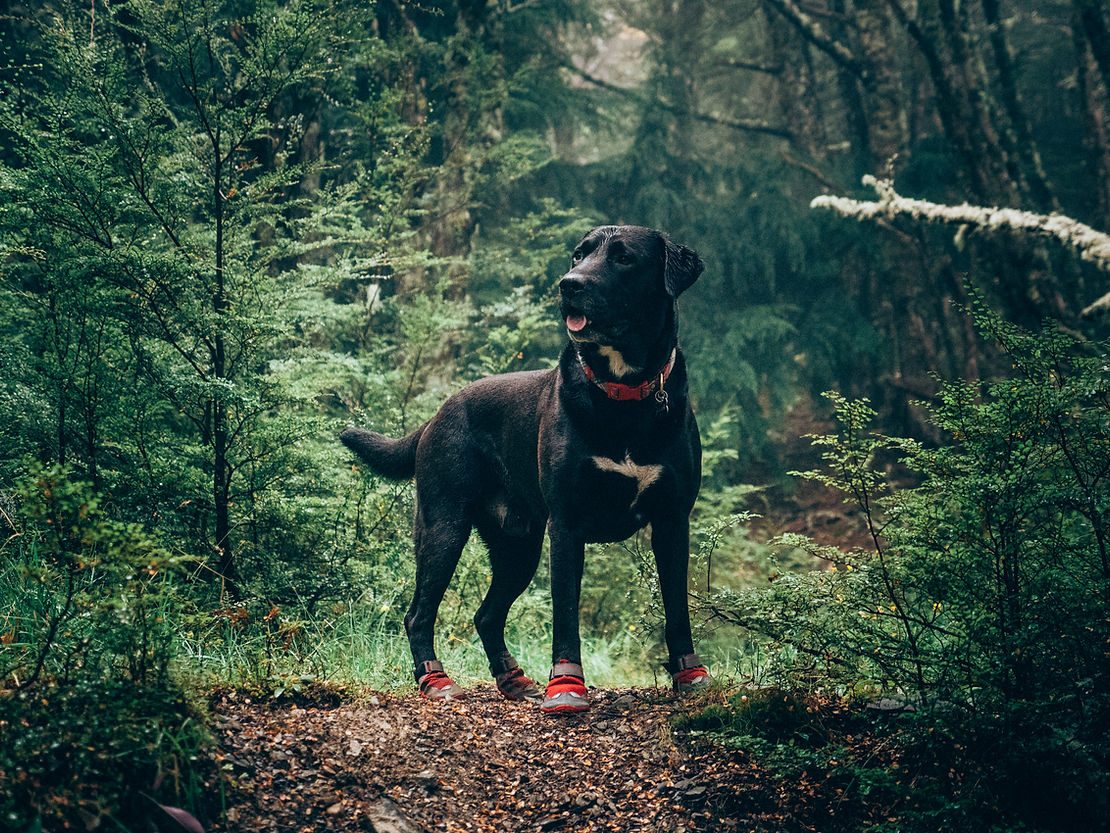
It’s a bad idea to have your dog tethered to your bike as it can lead to all kinds of accidents. If you’re worried about your dog running off, or want to train them to run next to the bike, there are devices available. An example is the ‘Walky Dog Plus’ which safely attaches the dog's leash to the seat post, but bear in mind that it’s only suitable for wider trails.
With the boots fitted, my attention shifted to the selection of dog bags that can turn your pooch into something resembling a pack horse. The contents of my bike rucksack were evolving, and I was now hauling around biodegradable poo bags, a whistle, a leash and about a kilos worth of dog biscuits. Seeing as dogs can carry about 10% of their body weight, the thought of delegating some provisions to Oshy seemed an attractive one – especially as he never chips in for petrol.
At the counter, I asked if Rocky had any final advice. “Start small and somewhere quiet, and take plenty of water.” He then added with a grin, "and make sure you enjoy yourselves.”
Take Three
For the next attempt, I decided to bring some moral support. For anyone who has biked around Victoria Park in Christchurch, or been along to the dig days, they may be familiar with Frank (the Tank). A well-mannered, five-year-old Labrador-Border Collie cross. he can often be spotted taking sneaky hotlines and shortcuts as he races his trail buddies, Todd and Agata, through the steep and twisty downhill trails of the park.
I had hoped that the calm and collected presence of Frank, who has several years of trail running experience under his collar, would have rubbed off on Oshy, but alas. During a drizzly Saturday morning at Craigieburn, the sound of barking could be heard echoing through the mountains.
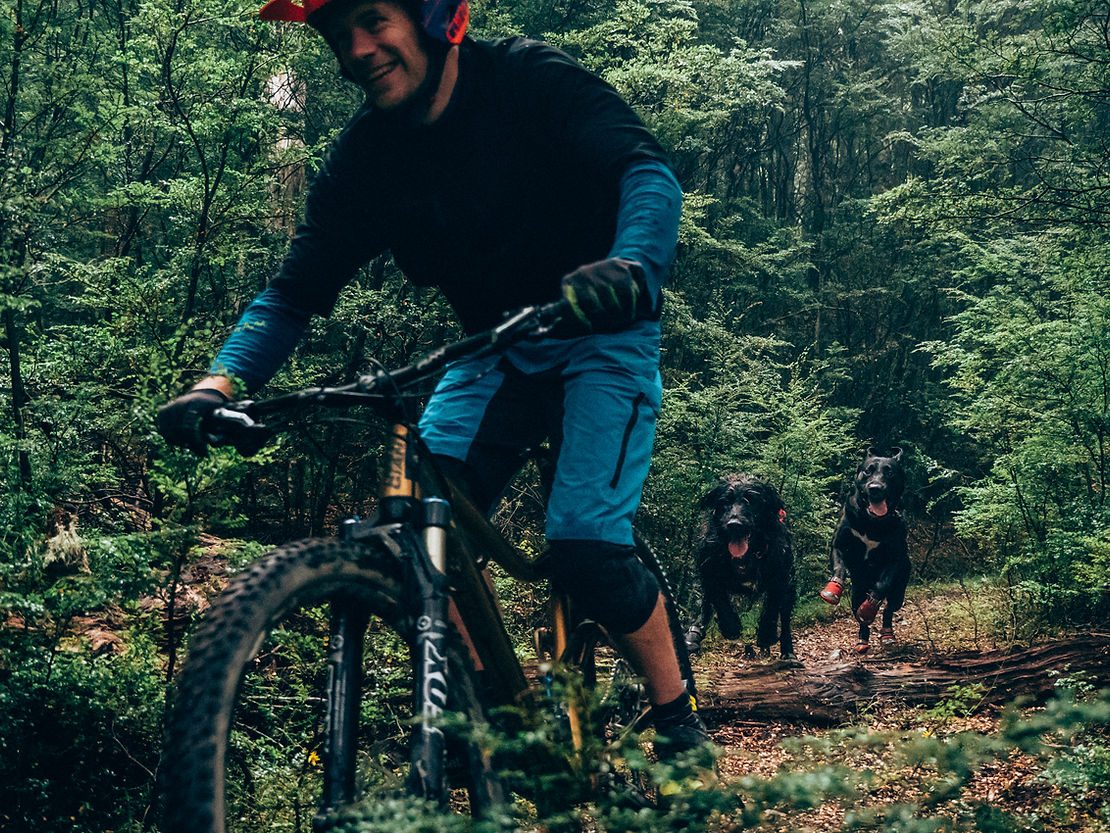
What I hadn’t taken into consideration this time was Oshy’s excitement at another trail dog and new riders. Sadly, he expressed this emotion the only way he knows how – barking. No amount of biscuits, polite requests to cease and desist or ‘time outs' in the car seemed to have an effect. After just two runs we had to call it a day. Something I’ve come to realise with Oshy is that if it's not working then don't force it. Similar to those rides where you have endless mechanicals or repeated crashes, it's best to just draw a line under it.
Through a rain covered windscreen I watched Todd and Agata set off for another lap, with Frank bounding happily – and silently – after them. I rolled my eyes and wondered why I bother. I turned to face Oshy and was greeted with a large pink tongue trying to clean my mud covered face. He then sat back with a huge grin across his chops, giving me the only reason I needed.
Words: Ian Middleton
Images: The Perfect Line
Tech: Like a Coiled Spring
“Enduro-bro”. “Do you even enduro?” “Nice fanny pack”. Ever notice how just as soon as something is ‘fashionable’ it’s somehow even more fashionable to mock the thing (or, more likely, your riding buddy for adopting the latest trend)? That doesn’t remove the thing’s original attraction or advantage though. Take coil shocks. We’ve seen a number of top enduro racers over the last year or two running coil shocks, which has seen them adopted by everyday trail riders who realise that that it’s not just elite riders that benefits from coil shocks. So, before poking fun at your mate who now has a big orange spring in the middle of their frame, if you haven’t already, let’s consider if there is something behind the coil shock hype that might be relevant to a bike’s performance. Warning: this is going to get technical so if you don’t geek out on bike-performance, the following is probably going to be worse than watching paint dry…
Back in The Day
Before I start, it’s worth a bit of an anecdote about how my appreciation for coil shocks happened by accident. My first coil shock came with my 2005 Turner 5 Spot, which I bought used in 2007. The shock came with the frame and before I even rode it I concluded that ‘coils are for DH bikes’, and it would be ‘soft’ and therefore pedal poorly, especially uphill. So I bought a Fox RP3 (tuned by Push) to replace the coil before I even rode the bike. Guess what? Once I’d ridden both I found that the coil shock outperformed the Pushed Fox RP3 in every way. Because I’m a bike-nerd from way back, I even went to the extent of attaching my helmet-cam to the downtube and filmed the two shocks on the same piece of track. It confirmed what I felt riding the bike: the coil was way more active over small bumps, it used its full travel more effectively, yet it also remained more composed and wallowed less into its travel when climbing steeply. And there were fewer seals to blow up. On that bike I also had one of the original coil sprung RockShox Pikes and I still consider that to be the best piece of suspension I’ve ever owned in terms of its performance and reliability for the time. That was more than ten years ago, and I’ve been a fan of coil shocks ever since (but I’m usually riding test bikes now so I probably ride air shocks more).
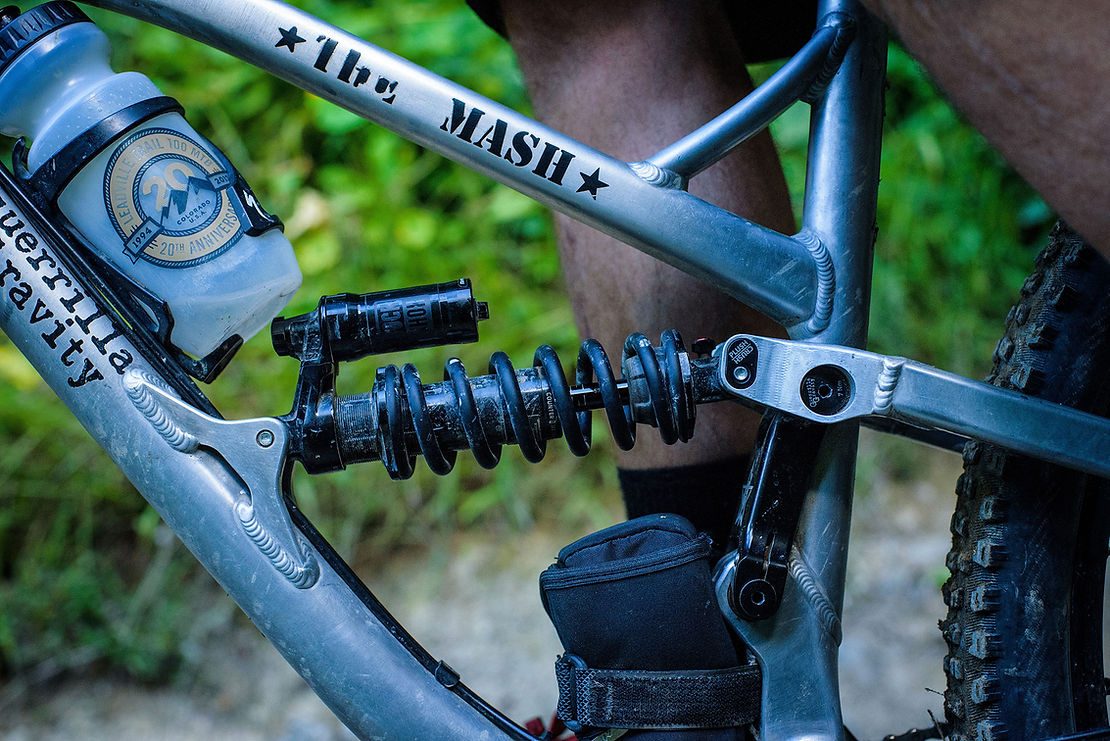
Nerding out on Springs
Of course, in the last decade air shocks have improved drastically. Claims of ‘coil-like performance’ abound with each new air shock launched to market. To an extent it’s true. Air shocks of today, with their larger, but tuneable positive chambers, larger negative chambers and slippery air seals, are more ‘coil like’ than ever, if not quite yet linear (more on that below). Also, air shocks rarely blow an air seal these days, whereas it used to be a regular occurrence, so their reliability is greatly improved too.
So, what does it mean to have a coil-like feel? What you might have heard before is that a coil shock has a linear spring curve. What does that mean? It means that at the start of the stroke, if it takes 400 pounds of force to compress the spring one inch (I’m using imperial because coil springs are measured in pounds), it will take another 400 pounds (800 pounds total) to compress the second inch and so on until the shock bottoms out at, for example, three inches of shock stroke and 1200 pounds of force. Air doesn’t compress in that linear way, it gets harder to compress further through the stroke, so if the first inch takes 400 pounds, depending on the size of the air chamber, it might be closer to 1600 pounds at the end of the three-inch stroke – even more if the shock has some volume reducers inside. This is what is meant by a ‘progressive’ shock rate. Of course, that’s not all…
Nerding out on Frames
Each frame’s suspension layout has its own linear or progressive behaviour too, independent of the shock choice. Ideally, you want the frame and the shock to be complementary. A linear frame-rate mated to a linear shock will make the whole package potentially too easy to bottom out and it won’t work very well for many riders, though it might for really lightweight riders. Having said that, a custom-tuned coil shock, like Push’s Elevensix, can take account of a linear frame-rate and produce a shock rate complementary to it. Conversely, a really progressive frame-rate mated to a progressive air shock (say one with the positive chamber stuffed full of volume reducers) will ramp up very rapidly so for many riders, they’ll never get anywhere near full travel, despite wallowing around in the mid-travel a lot.
So yeah, it’s complicated. But if you have a frame well suited to coil shocks (I’d list Santa Cruz, YT, many of the Intense range, Scott Bicycles, Giant Reigns, amongst many others) what do you stand to gain from a coil shock, and what might you lose?
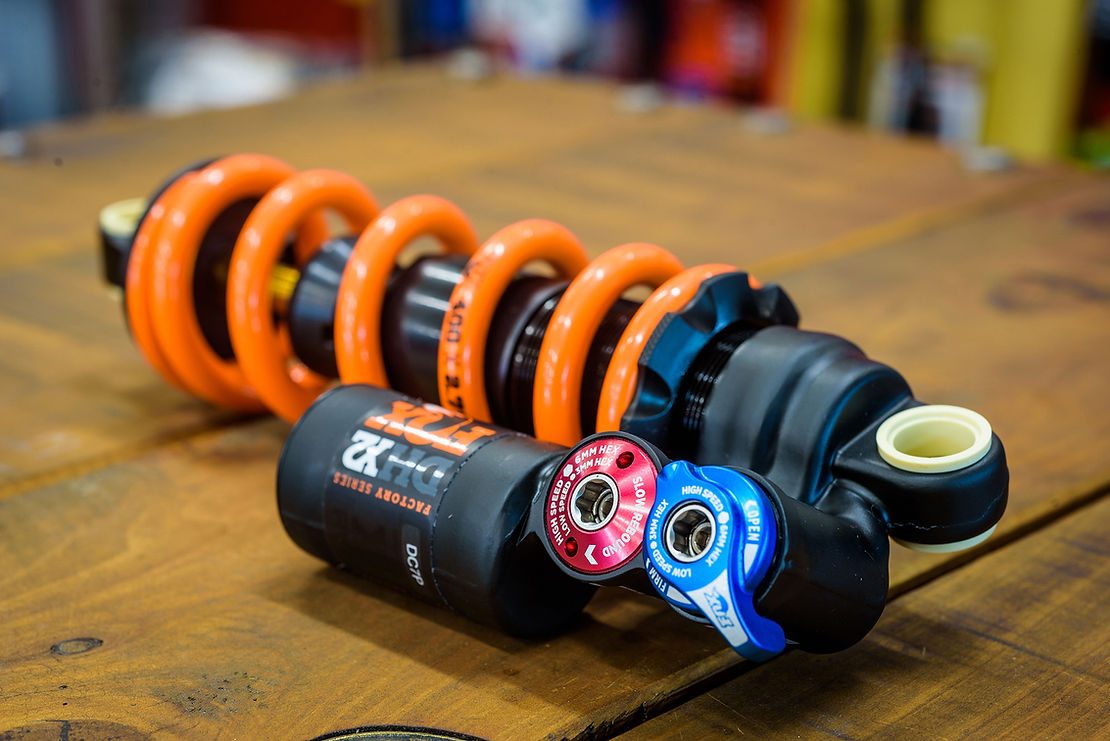
Possible Gains
Thanks to fewer seals, coil shocks have very little stiction and so are better at taking out the little chattery bumps, providing better traction and comfort. Some riders liken it to feeling like riding with a slightly flat tyre (but without the sidewall folding) because what should be chattery bumps just seem to disappear. Better traction helps your bike stay on line around rough corners and helps you slow down by letting the tyres grip rather than slide under braking. Comfort might not sound that important, but it can play a big part in how enjoyable a ride is, or how successful a race is. If you feel your hands and feet are rattled to pieces ¾ of the way through a ride or a race, your ride will start to suck and you’ll either be slower or risk crashing.
As well as more traction and comfort, a coil spring also falls into its middle-travel less readily (also called ‘mid-stroke support’) and can therefore provide better climbing, especially up steep climbs, and delivers better support when pushing the bike into corners. This is the part that I think a lot of riders misunderstand (I know I did until I rode a coil shock): if you’ve got the right weight coil, coil shocks provide more mid-stroke support, not less. It’s common for riders looking for more mid-stroke support to add volume reducers to their air shocks. But once you’ve lowered air pressure to still allow for full travel, what you’re likely to find is that mid-stroke support is lessened, not increased. If you don’t drop air pressure, you’ll simply not be able to access all the travel your bike has to offer.
A coil shock (with the right spring for your weight) will make their full travel more available, as opposed to air shocks which will ramp up harder at the end of the stroke (because, progressive), though this could also be a con, depending on how you ride and what frame the shock is fitted to.
Coil springs don’t get hot, and aren’t affected by changes in altitude. Warm air is harder to compress, and make your shock feel more harsh at the bottom of a run compared to the top.
Possible Losses
Coil springs are heavier. You’re likely to add in the order of 400 grams (the weight of the metal coil) switching to a coil shock, all else being equal. Is that weight something you can notice riding? No, it’s not, it’s a non-issue (our own testing with a power meter, published back in 2014, which mirrored what the physics would tell you, showed I needed an extra 0.25% (as in ¼ of a percent) increase in my power output to carry an additional 450 grams and go the same speed uphill).
Adjustability. If you put on or lose more than 5kg or so, you might need a different coil spring. They're not the most expensive thing to buy if you do need another.
Bottom out resistance. Depending on your frame, you could find that the linear nature of a coil spring means you bottom out the shock too much. Having said that, some of the most linear frame rates (like Specialized) have been run by very aggressive and fast riders on the EWS circuit with coil springs, so depending on the shock, you might find sophisticated high-speed compression damping can counteract this.
There is one other cost though, which is the hardest to describe and probably the most important for certain riders; that is ‘pop’, for want of a better description. It’s easier to get an air shock to bounce the bike off the ground when you want it to, which is down to its progressive nature(when the bike doesn’t bounce of the ground when we don’t want it to, we’d call this ‘traction’ or the bike being ‘planted’). This is not as easy to remedy as just running lighter rebound damping, it’s something else that’s oddly subtle yet also obviously felt. Ride a coil sprung shock, even on a bike you’re not overly familiar with, and you’ll probably feel it. Really active riders who like to jump off every trail feature (like ex-BMXers) are probably going to miss the pop the most.
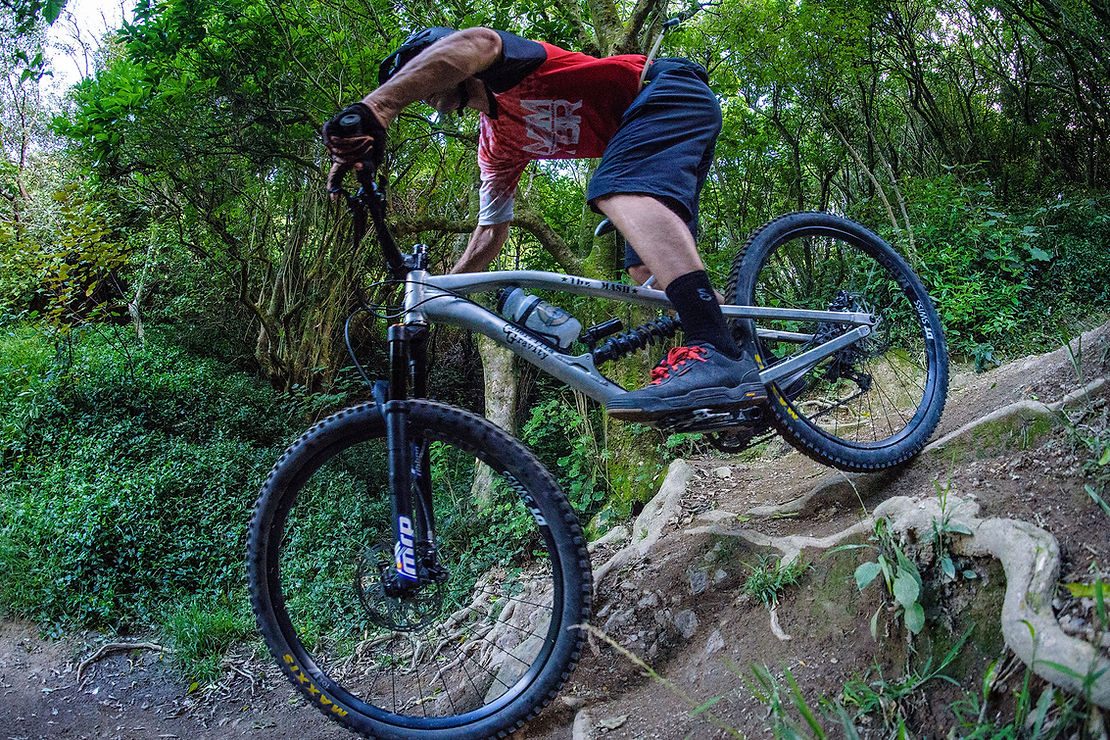
Wrap up
Is a coil shock worth considering? That depends. If you value traction and comfort, you prefer a firm middle supportive feel over a ‘forgiving’ or ‘soft centre’, you’d like to get to that last bit of travel a bit more easily, and you don’t mind losing a bit of pop, a coil spring is probably going to make your bike ride more like you want it to. That’s especially true if you I know you know you’re going to be riding rugged tracks or tracks where traction is needed. If, on the other hand, you regularly bottom out your air spring (assuming you’re not running the air-can with no reducers), or you love to bounce from one trail-double and root-kicker to the next, then a coil might detract from parts of your riding experience.
Words: Carl Patton
Images: Digby Shaw
Trail Builder: Magic Mondays
Mondays aren’t known by most as a favourite day of the week – but for the 20-odd Dunedin riders working hard to build and maintain the Whare Flat network of trails, it’s by far their most productive!
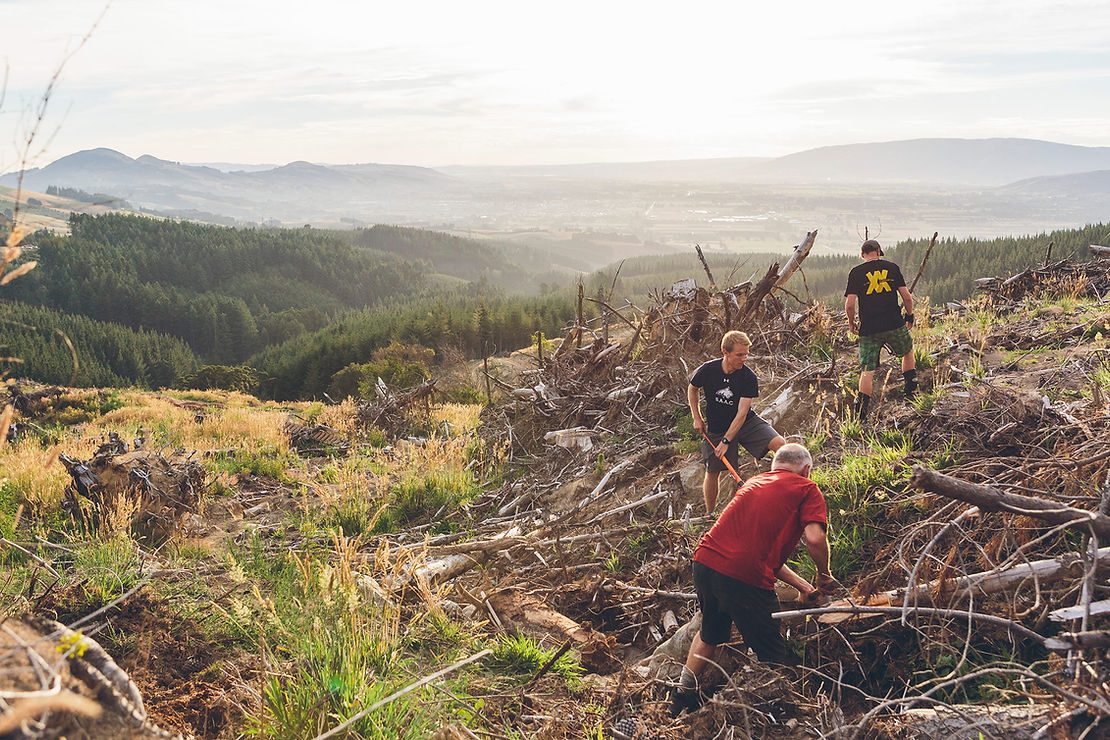
“We’ve been digging Monday nights for the past three years,” says Mountainbiking Otago member and committed track builder Gareth Hargreaves, who has been buildings trails in the area for more than a decade. “We started with an uphill track called Fir Trader, then moved onto our newest downhill track Bermageddon, and now we’re starting the rebuild of a local favourite, The Green Mile.”
Blank Canvas
More than 13 years after he built one of the area’s inaugural tracks, Snakes and Ladders, Gareth is the first to admit that his vision and building skills have come a long way, and he’s looking forward to leading the crew on its new challenge.
“The Green Mile was quite a flowy track with some skill-testing sections, which made it quite popular with a wide range of riders,” says Gareth. “Since the area was felled early last year, Dunedin mountain bikers have been looking forward to its reincarnation and so have we!”
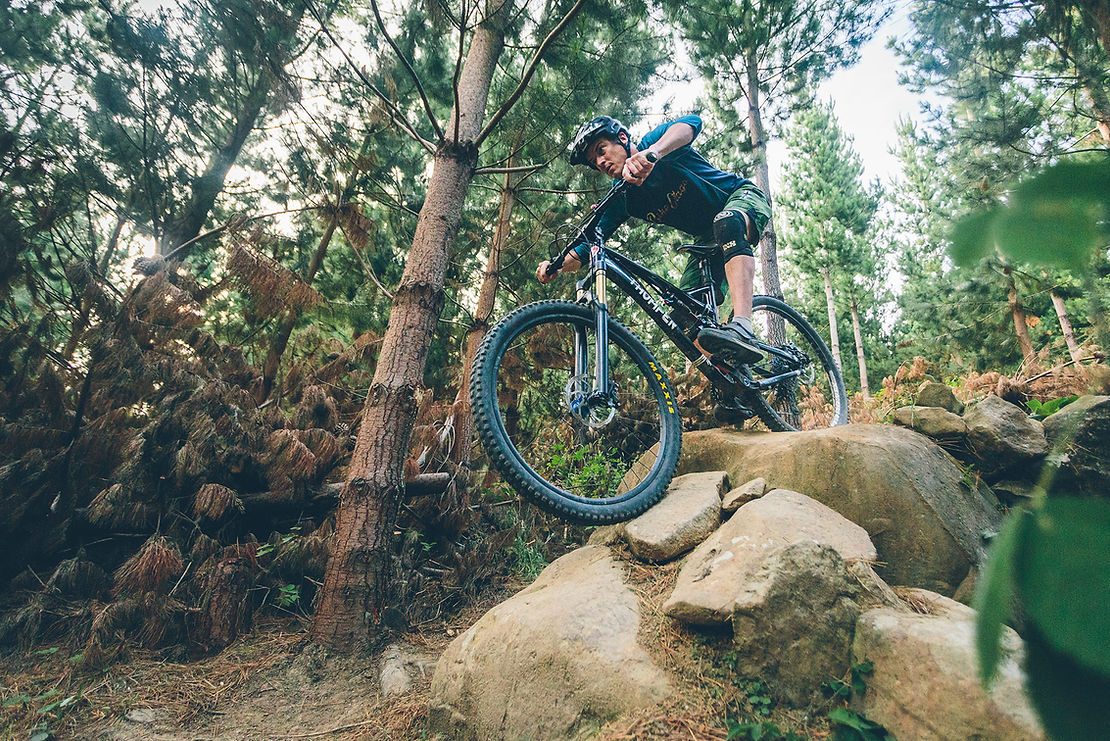
As soon as the crew put down their tools following the last metre of Bermageddon, they were already brainstorming how to rebuild a “bigger and better” version of The Green Mile, with financial support from Trail Fund NZ.
“There’s almost nothing left of the old track, so it’s pretty much a blank canvas, which is both exciting and intimidating,” says Gareth. “Both Fir Trader and Bermegeddon had their routes largely defined by the surrounding bush, so this is quite different.
“At this point we’re busy mapping out the line. We’ve actually found that the biggest challenge of building in a felled area with no existing track is not having direction dictated by the terrain – it’s all up to us.”
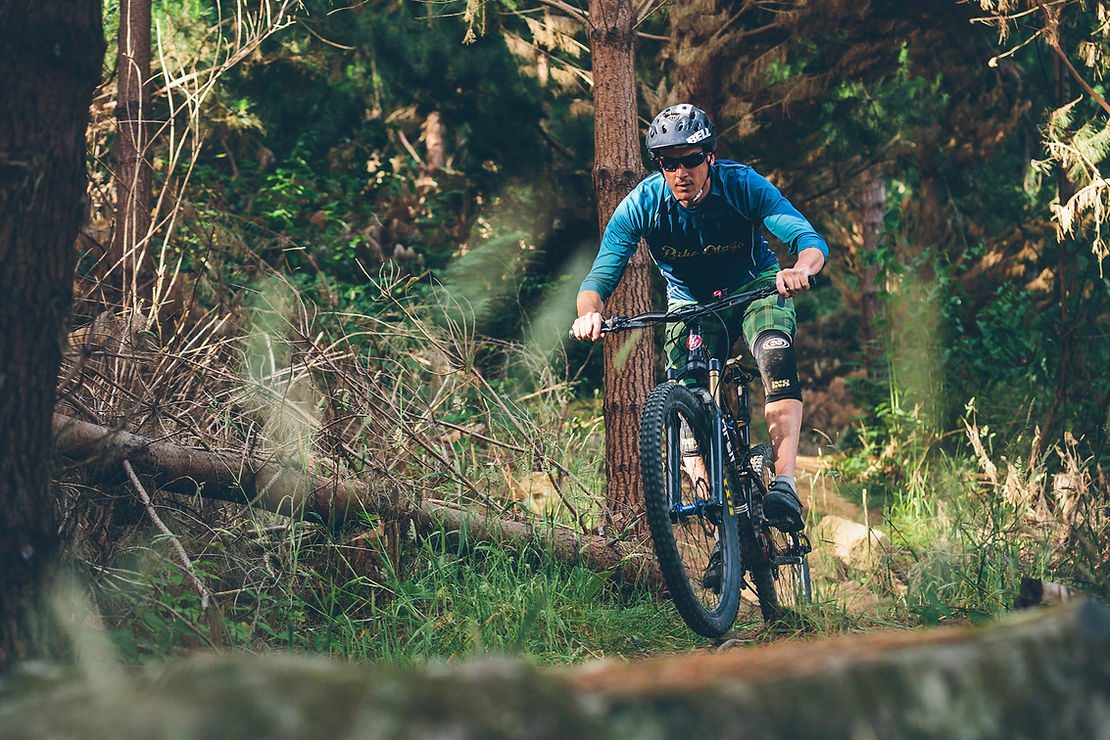
Or almost. When City Forests felled the area, Gareth says they kindly did their best to retain features the club has put a lot of time into – including a big bermed wall ride and some rock sections – which will be incorporated into the trail.
The Green Mile will also be extended from its original length of 850m to approximately 1600m, and the plan is to build a similar style track – flowy with some skill-testing sections.
“That’s the general plan, but it’s amazing how everything comes together throughout the build – everyone brings new ideas to the table and the end result is often much better than if one person had built a track on their own.”
Raving Reviews
Whare Flat has been growing steadily over the past decade and now boasts approximately 15km of tracks. The club’s hand-built uphill track, Fir Trader, was completed in 2015 and is very popular with mountain bikers and runners as an alternative to the steep 4WD track.
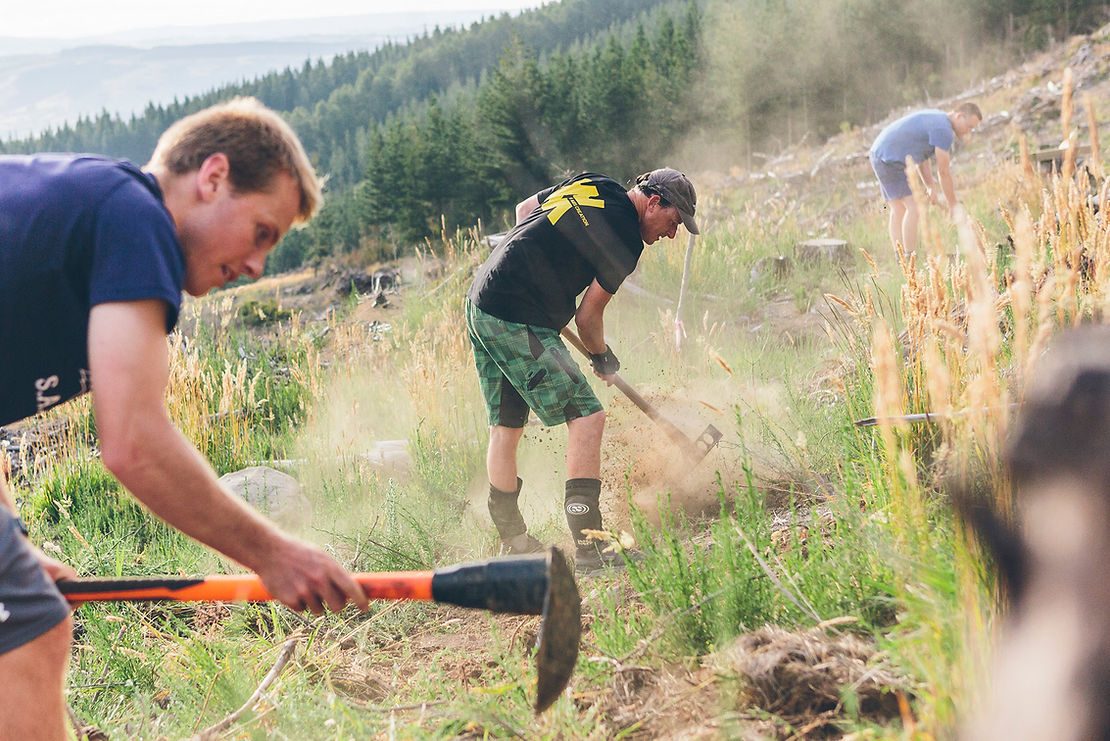
Bermegeddon, a hand-built Grade 4 downhill trail which also received support from Trail Fund, has been open to the public for less than a month but is already a local favourite, with more than 400 Strava runs.
“I’m obviously a bit biased but I think it’s a barrel of monkeys to ride,” says Gareth. “We’ve used the natural environment as much as possible and features include berms, rock rolls and steps, table tops and a few gap jumps that you can roll around if necessary.”
Words: Meagan Robertson
Images: Jemma Wells
Story: Miramar’s Dark Grey Waves
The old pump track in Miramar has had a transformation. No longer mere mounds of dirt, the perfectly crafted waves are now coated with a handsome layer of dark grey asphalt. It’s part of a new wave of sealed tracks popping up around the country, following an overseas trend which has become increasingly popular in recent years.
The Miramar track is an especially nice example. Sitting in a clear space on top of the Miramar peninsula in Wellington, it provides stunning views of Mt Victoria and Haitaitai across the deep blue expanse of Evans Bay. Planes regularly fly through the space on their way into the nearby airport.
Local mountain biker Paul Gray is often found up there at the end of a busy weekend. “It’s usually a Sunday evening type thing after we’ve ridden too much in the weekend, and want somewhere to hang out and have some beers, and try some stupid stuff.” He says the track is “quite progressive” and attracts everyone from little kids to pretty handy riders. “You can sort of do anything around it; you just start linking it up and there’s lots of sneaky lines and jumps and it opens up quite a bit. I’ve seen the same kid up there every time I’ve been going up, and he’s just getting better every time, so it’s pretty good for those young guys.”
Since the pump track was sealed at the end of August, it’s been getting a lot more use, and not just from mountain bikers. Ben Wilde says he's seen a real mix of skateboarders, kids on scooters and families with small children start using the space, as well as the dog walkers who have been going up there regularly for over 30 years. Despite the range of different interests, Ben says there’s been “zero issues” with sharing the space. He says he was “taken aback” by how popular the pump track has been since getting the layer of asphalt. “You can have 20 or 30 people up there, which is great. I think pump tracks are a hugely efficient use of space, and given the response there’s been to it, it would be great to see more of them around the city.” Ben is a co-founder of the Miramar Track Project (MTP), which was set up almost ten years ago when he and a couple of others got sick of the drive across town to Makara Peak to do their digging and riding.
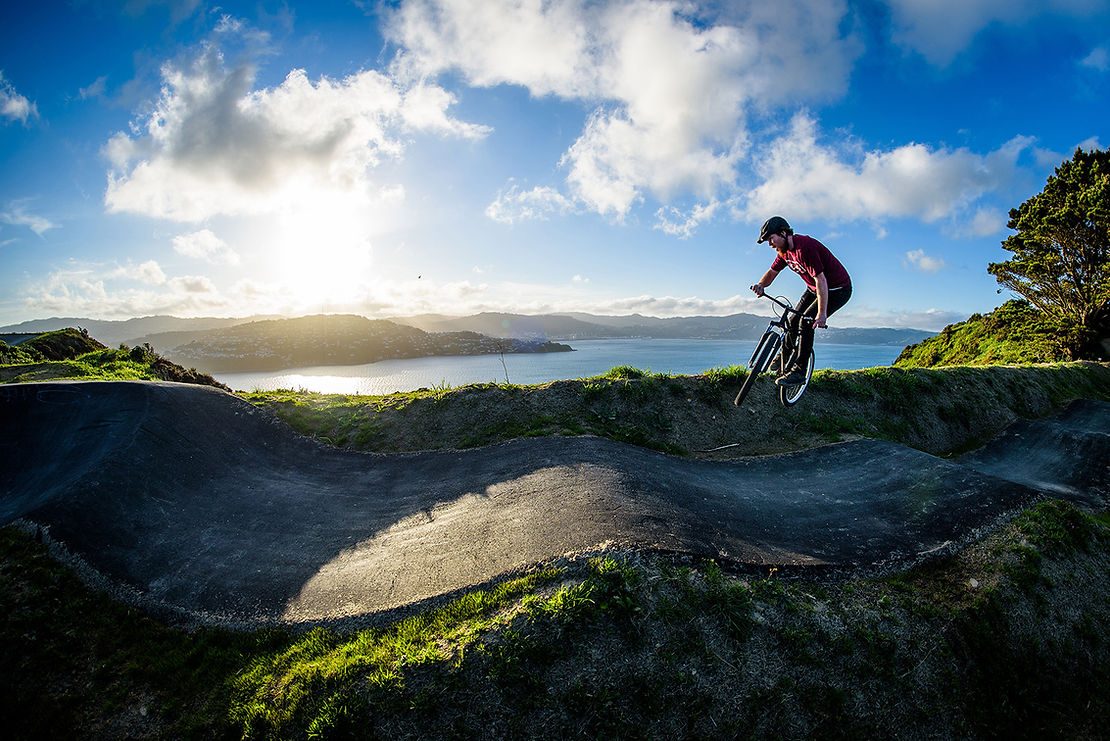
Since then a tidy wee trail network has been put in through Centennial Park, built by volunteers determined to make the best of the 100-odd metres of vert on offer. The trails offer a gentle climb up on a shared-use trail and a couple of mountain bike-priority options back down, such as the long-time fan favourite Jailbreak. The first pump track at the top of the site was built about seven years ago and has been through several revamps since. The most thorough was at the end of April, when the Wellington City Council paid for a contractor to level the site and rebuild the pump track to a higher standard. Ben says the idea for a major overhaul came from Steven Peters, then a council ranger, who made the suggestion about 18 months ago. But a joking comment from Russel Garlick (another MTP co-founder) about how good it would be to have the track sealed put the idea in people’s heads.
Ben said they didn’t have any hope of raising the funds it would need, which was tens of thousands of dollars. “So it was well beyond running a few enduros and selling some sausages.” Luckily, the Wellington City Council were into the idea, and put up the $40,000 needed to get it asphalted - on top of the $16,000 they previously fronted for the April rebuild. They also had hydro seed (spray on grass seed) and other landscaping done in and around the track. Both the April overhaul and August sealing work was done by the New Zealand branch of Velosolutions, a Swiss-based company owned by Claudio Caluori - the man famous for his hilarious commentated preview runs of Downhill World Cup courses. The company have become specialists in sealed pump tracks. The New Zealand owner-partner is Rotorua-based Craig Pattle, who says Velosolutions is nearing 100 such builds worldwide over the last decade - about ten of which he has been involved in personally. He says they had to make a couple of changes to the Miramar track before they laid down the asphalt, as the seal makes it run a bit quicker.
About 80 tonnes of asphalt were required to seal the track. That work was done over a few days by a crew of dedicated volunteers, who took time off their day jobs to get involved in the hot, physical work with only free pizza (courtesy of Burkes cycles) and satisfaction in return. Velosolutions were given free reign with the design of the track, apart from a request for multiple loops to be included. They came back with something that rides well in both directions for people at all skill levels. Craig says getting the design right is a matter of trial and error, and years of pump track building experience. “We’re pretty sure we know what works by building these tracks all around the world.” He says as well as looking better, the main advantage of the asphalt was less maintenance. Dave Halliday was one of the key figures in the publicly-funded project.
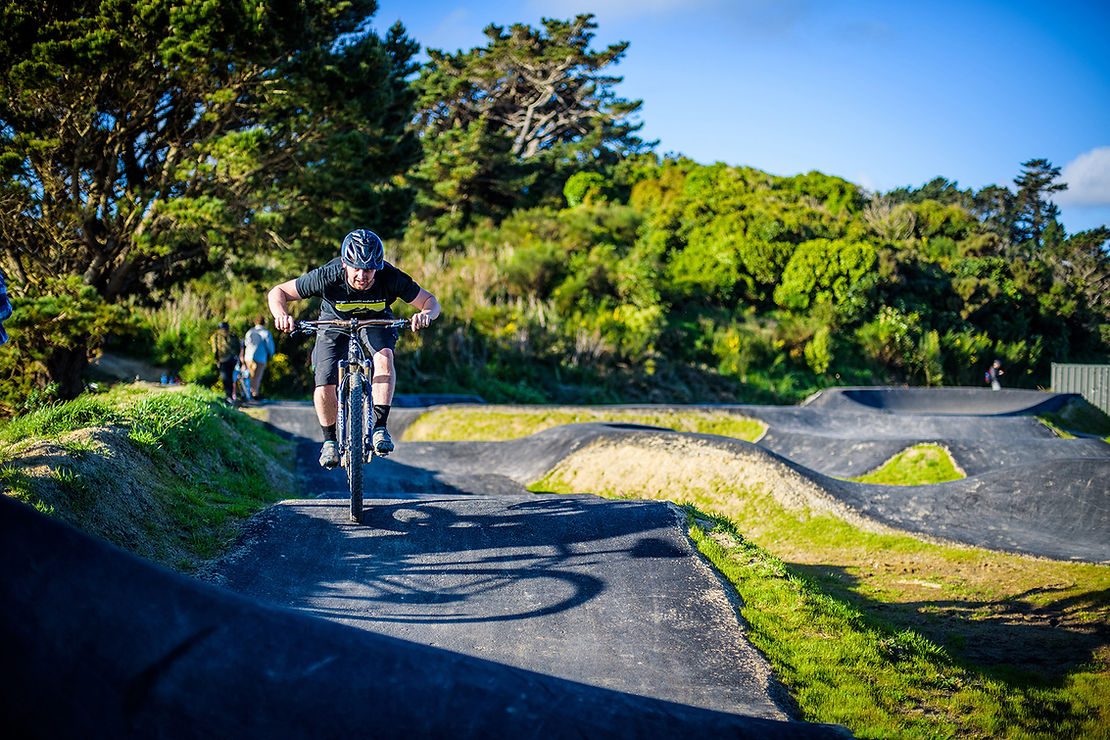
The Wellington City Council project manager for parks and recreation says for the council, paying for the sealing was worthwhile because of those maintenance reductions, which takes pressure off the community, while making the track able to be used by a wider range of users, like skateboarders and scooter riders. “It’s quite apparent now that with a sealed track you get a better product, so that additional investment is worth it I feel.” He says from a council point of view, it’s important the pump tracks can be used by people from a range of age and skill levels. And there could be more asphalt pump tracks in the future, if the council’s budget allows. Dave would like to see a recently upgraded track in Tawa sealed, but there isn’t any money for it at the moment.
For Ben and the other MTP trail builders, the zero-maintenance aspect is massive. “The problem with dirt pump tracks is they deteriorate quite quickly; all the stones come through and they become quite rough. “So you basically have to constantly look after them, and when you’re a volunteer organisation, or even council, that’s not something anyone wants to sign up and do.” He would like to see the concrete area next to the track resealed with a smoother concrete, and some toilets added, but those upgrades are not on the council’s radar at the moment.
A project like this couldn’t happen without strong relationships between the trail builders and the local government. Dave says a very strong working relationship has developed over the years. “Those guys put a lot of effort in, they’re very self-motivated and we assist where we can.” Ben says the council have been very supportive. “They get frustrated with us of course, as a community, when we go and build and ride in places we’re not supposed to. But on the whole, the relationship with the community and Wellington Mountain Bike Club is really strong.” As for the trail network, there’s a feeling it wouldn’t be a good idea to put more track into the small reserve - though maintenance and planting work is ongoing. About 500 native plants a year are put into the hill by the trail building team.
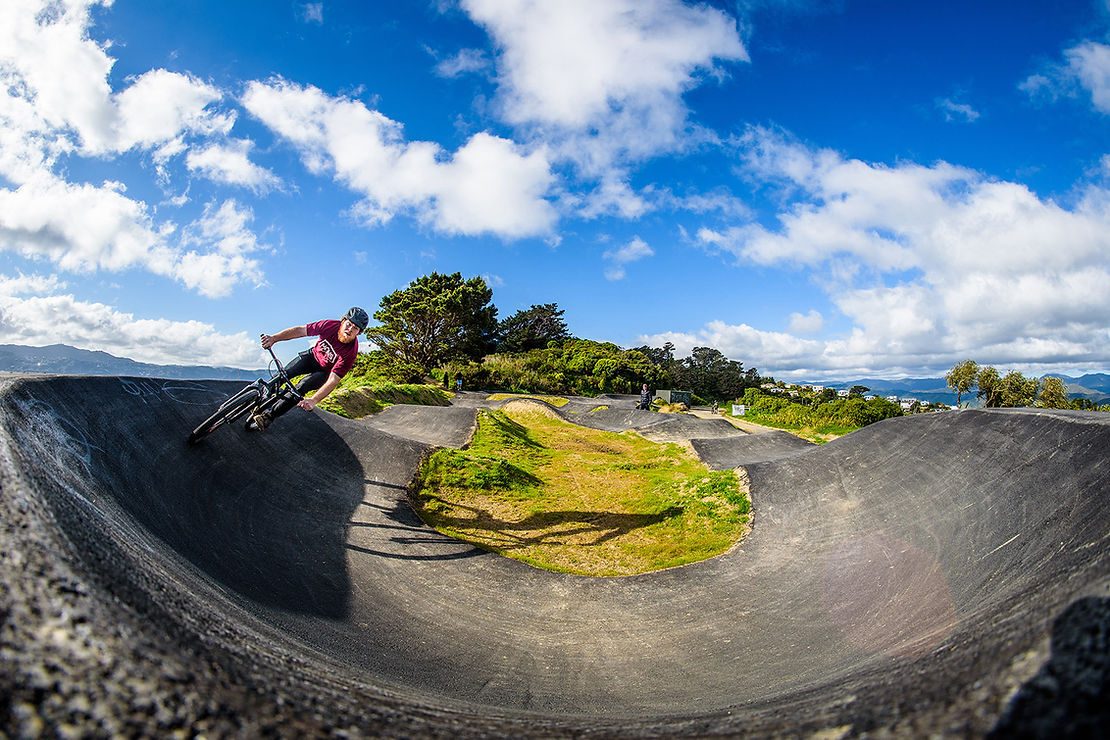
Ben says the MTP is working with the council to look at trails on the western side of Miramar Peninsula. He says it’s been a real plus for the community to have the recreational space, but one of the “big tragedies” is a lack of action over the adjacent Crown land, made up of the empty Mt Crawford prison and about 76 hectares of ex-Defence Force land which was handed over to Land Information New Zealand in March. They plan to turn the vast bulk of it into a public reserve - a promise which has been made since 2011 - but the final decision is dependent on funding availability. Group manager of Crown Property John Hook says work is underway with DOC and the council to see what needs to be done to set up the reserve.
“Subject to the appropriate funding being confirmed, creating the reserve is estimated to take up to four years and the property will not be opened to the public until the work has been completed.”
Despite all that potential being locked away currently, even the small spot they have has become a real feature, Ben says. “It’s been a feature of some peoples’ decision to live out here. I know people that have just decided that Miramar’s okay now.”
Words: Michael Hayward
Images: Digby Shaw
Video: The Process X: It's So Sick
BREAKING NEWS! The Process X has been spotted out in the wild. We tap into field reporters Miranda Miller and Connor Fearon to get their impressions of the bike, what life was like before X, and where they see themselves in the future.
“Riding the Process X is so sick.”- Connor Fearon
“It’s friggin extreme.” - Miranda Miller
“Me and the Process X are gonna take on the world, one race at a time.” - Connor Fearon
“I don’t know how I lived without it, to be honest.” - Miranda Miller
News: The all-new Norco Shore
The mountains of Vancouver’s North Shore have ignited imaginations for decades - an enchanted realm formed by nature and hand sculpted with trails of triumph and confronting challenge.
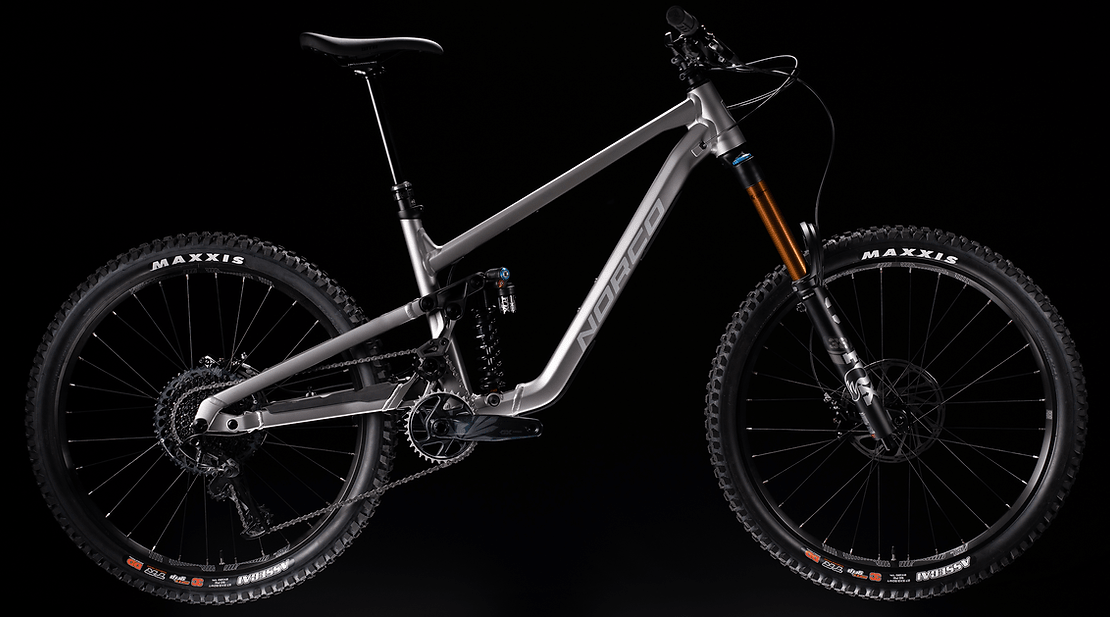
There is a life force at play here - intertwined with every rock, root and trail relic. It draws you in and alters your perception of the impossible, leaving an undeniable, indelible mark.
It’s where boundaries are broken and limits hyperextend. Where gravity meets technique and technology amplifies instinct to exploit every scrap of untapped potential.
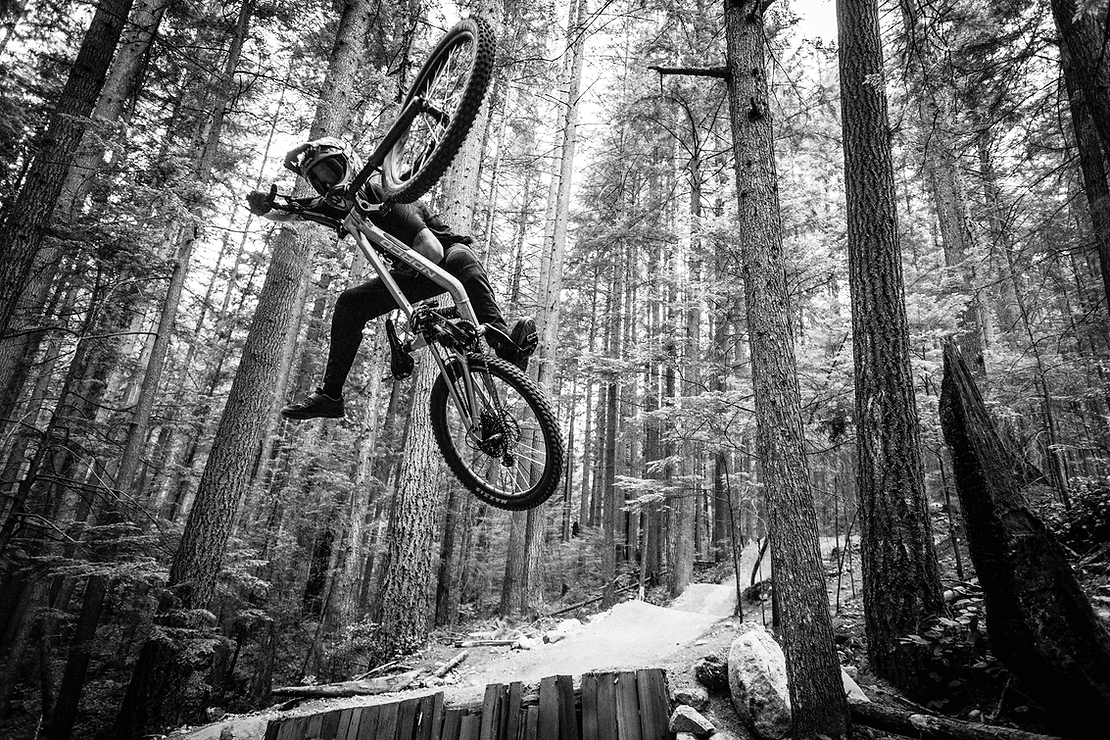
Twenty years have passed since we drafted the blueprint for the original Shore. The mountains of North Vancouver remain steadfast, demanding evermore from riders and their equipment. They are the ultimate inspiration and proving ground for the sublime big-mountain ride that’s driven by the mystical place that started it all, and demands the most from those who ride there.
The Shore uses Norco’s Ride Aligned™ Design System which matches each individual bike to the human who rides it, creating a customized Freeride platform that is both stable and balanced, allowing you to push harder. Using individual rider metrics, precise suspension kinematics, a proprietary app technology, you’ll align with your ride experience like never before.
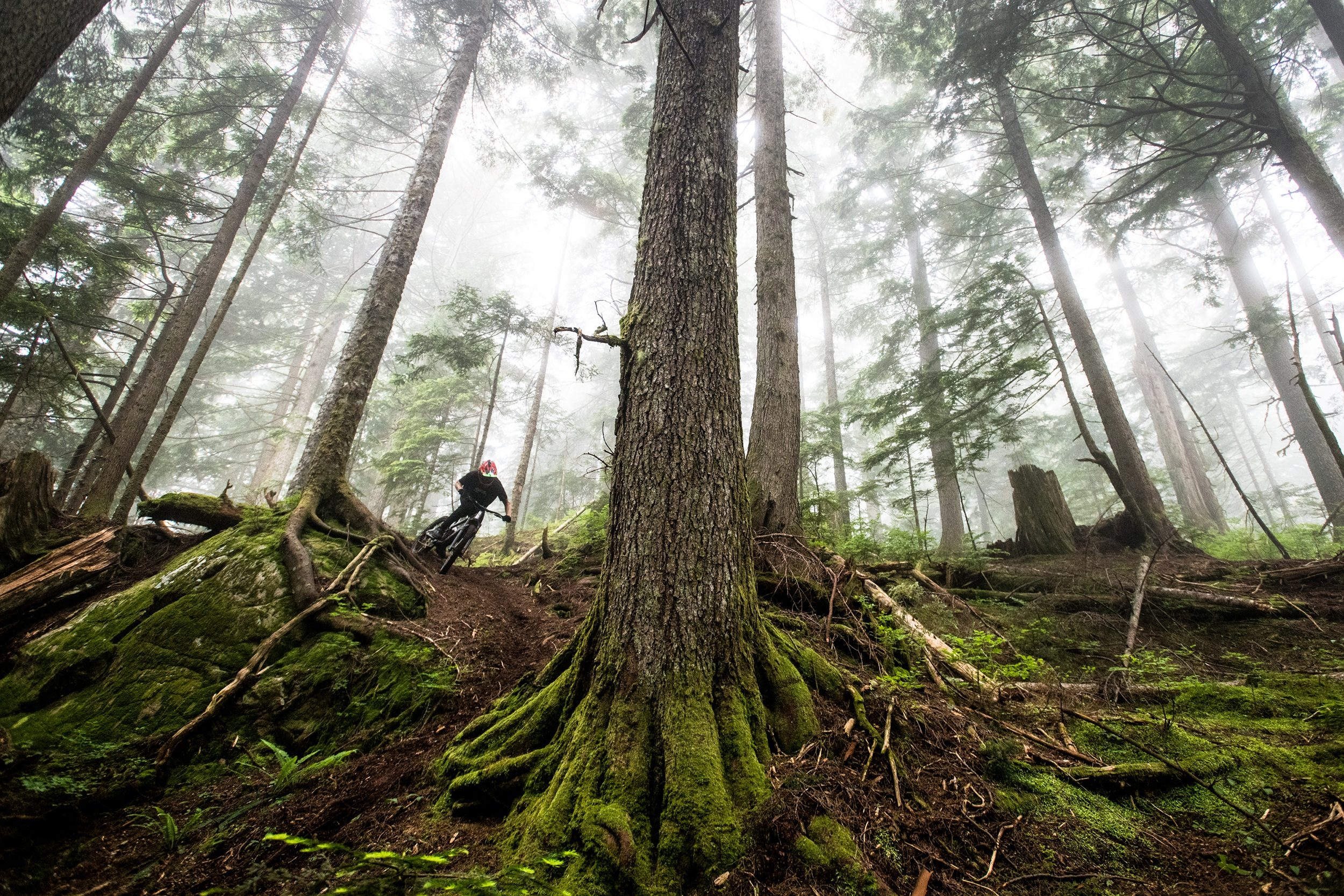
IDLER PULLEY
By integrating an idler pulley into an elevated pivot Horst Link suspension design, a rearward axle path can be achieved with minimal pedal kickback, and the precision coil-specific suspension kinematics ensure grip and support to boost jumps and shrug off deep landings on rough trails.
DYNAMIC PEDALING
Suspension design and rider compartment are designed to get the bike moving quickly on run-ins and rollers. Maximized pedal efficiency gets you to the top faster and conserves energy for the descent you’ve planned your whole ride around.
CHOOSE YOUR POISON
The Shore is available in two distinct configurations, depending on the type of riding you love. 180mm rear travel combined with a 180mm single crown fork and a wide-range 12-speed drivetrain for big, burly trail rides in the wild, and 190mm rear travel paired with a 200mm dual crown fork and a 7-speed drivetrain for big days at the bike park.
DURABLE DESIGN, EASY MAINTENANCE
Frame design, hardware and component decisions have been made specifically to keep the Shore on the trail and out of the shop – and when maintenance is necessary, it’s easy and quick.


